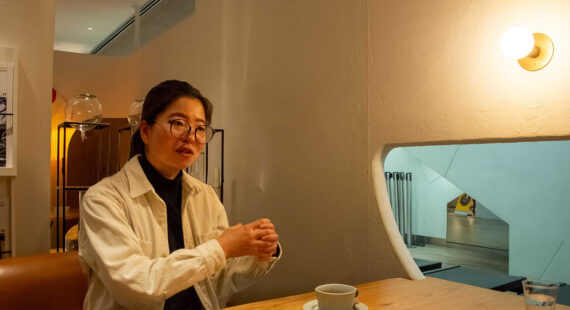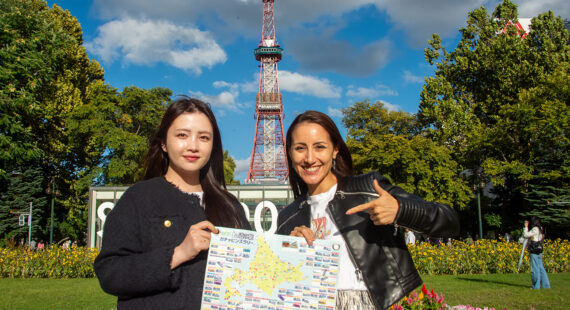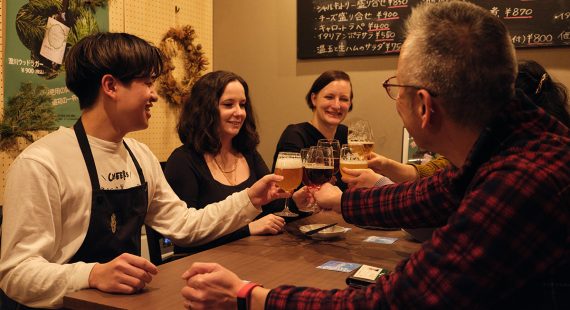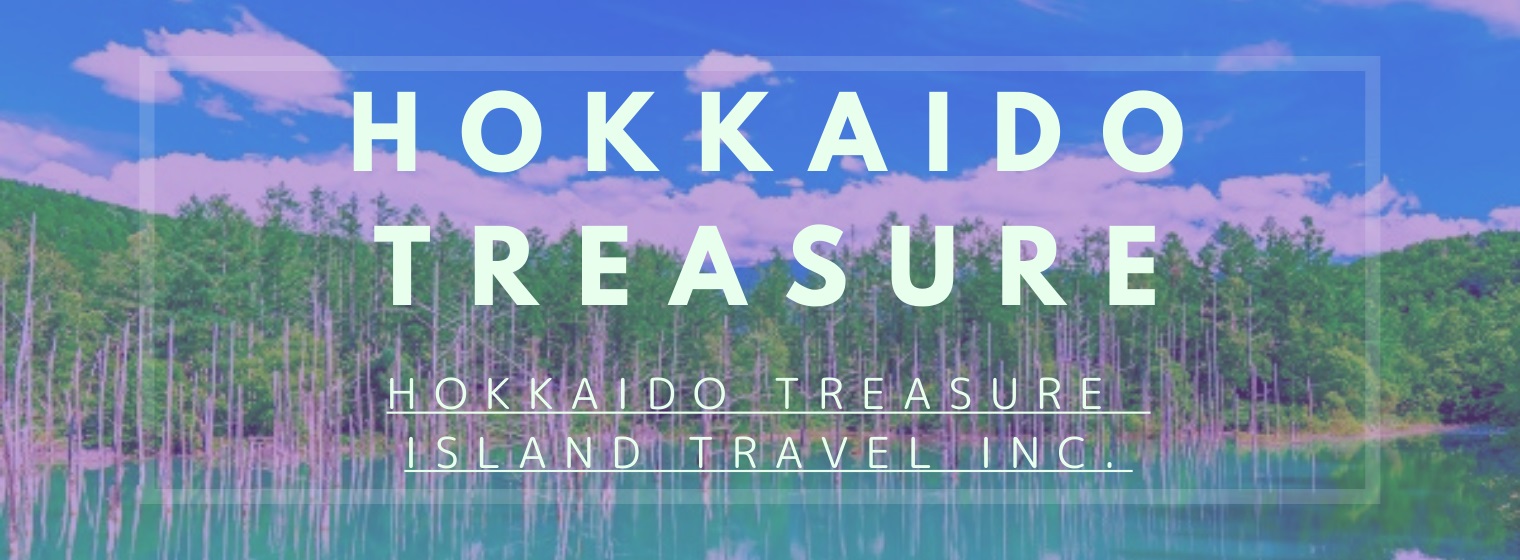(Written by Satsuki Takai)
A Festival that Transformed the Image of Winter
When you hear the word “winter,” do positive words such as “snow,” “Christmas,” and “snowmen” immediately come to mind? Or do negative words like “cold,” “freezing,” and “slippery” come to mind instead? For residents of Hokkaido or Sapporo, many would likely mention the Sapporo Snow Festival first.
Before the festival began in 1950, Hokkaido had little to attract visitors in winter besides skiing, and the post-war period was still marked by shortages of food and fuel, leaving a lingering darkness from the defeat in the war.
It was the Sapporo Snow Festival that transformed Hokkaido into a place people wanted to visit even in winter.
This world-renowned “Festival of Ice and Snow,” which celebrates the harsh winter cold, takes place annually from February 4th to 11th in the city of Sapporo, the capital of Hokkaido Prefecture, and now it attracts over 2 million visitors from around the world.
Hokkaido Treasure Island Travel Inc. helps you in every way possible to fully enjoy the festival. A dedicated guide and driver will accompany you from airport pickup to drop-off. At the popular Sapporo Snow Festival, where crowds are inevitable, the assistance of a guide and driver who know the area inside out is the key to a smooth and comfortable trip.
Are you planning to go on a tour this winter but haven’t decided where? Why not include Sapporo and Hokkaido as one of your options?
Not just Sapporo—Hokkaido is full of winter festivals
Before being introduced to the Sapporo Snow Festival, you must know that Sapporo isn’t the only place to enjoy winter festivals. Although they may not be as large, Hokkaido offers a variety of other unique winter festivals. Let’s take a look at a couple of them that are easily accessible from Sapporo.
Otaru Snow Light Path
In fact, one of the events that inspired the Sapporo Snow Festival was a snow festival held at an elementary school in Otaru. When it comes to snow festivals, Otaru is the forerunner. The Otaru Snow Light Path is held in the city of Otaru, which is adjacent to Sapporo, in February, at almost the same time as the Sapporo Snow Festival.
Of the many venues, the main ones are the Otaru Canal, which was once used for loading and unloading cargo to warehouses along the canal, and the former Japanese National Railways Temiya Line tracks. 120,000 candles made from snow and buoys once used for herring fishing light up the town with their warm light. All the candles are handmade by volunteers. During the event, lighting the candles, relighting the ones that go out, and cleaning up the accumulated snow are all done by hand.
Otaru is also a place where you can enjoy good food. Warm soup is prepared to welcome visitors in the cold winter, and there are many restaurants offering a variety of food, including fresh seafood dishes, which are specialties of the port town. Otaru also has a wide variety of sweets, and the cheesecake from the local confectionery shop LeTAO is especially recommended. Despite being a winter festival, this event gives you a sense of warmth and offers a different kind of fun from the Sapporo Snow Festival.

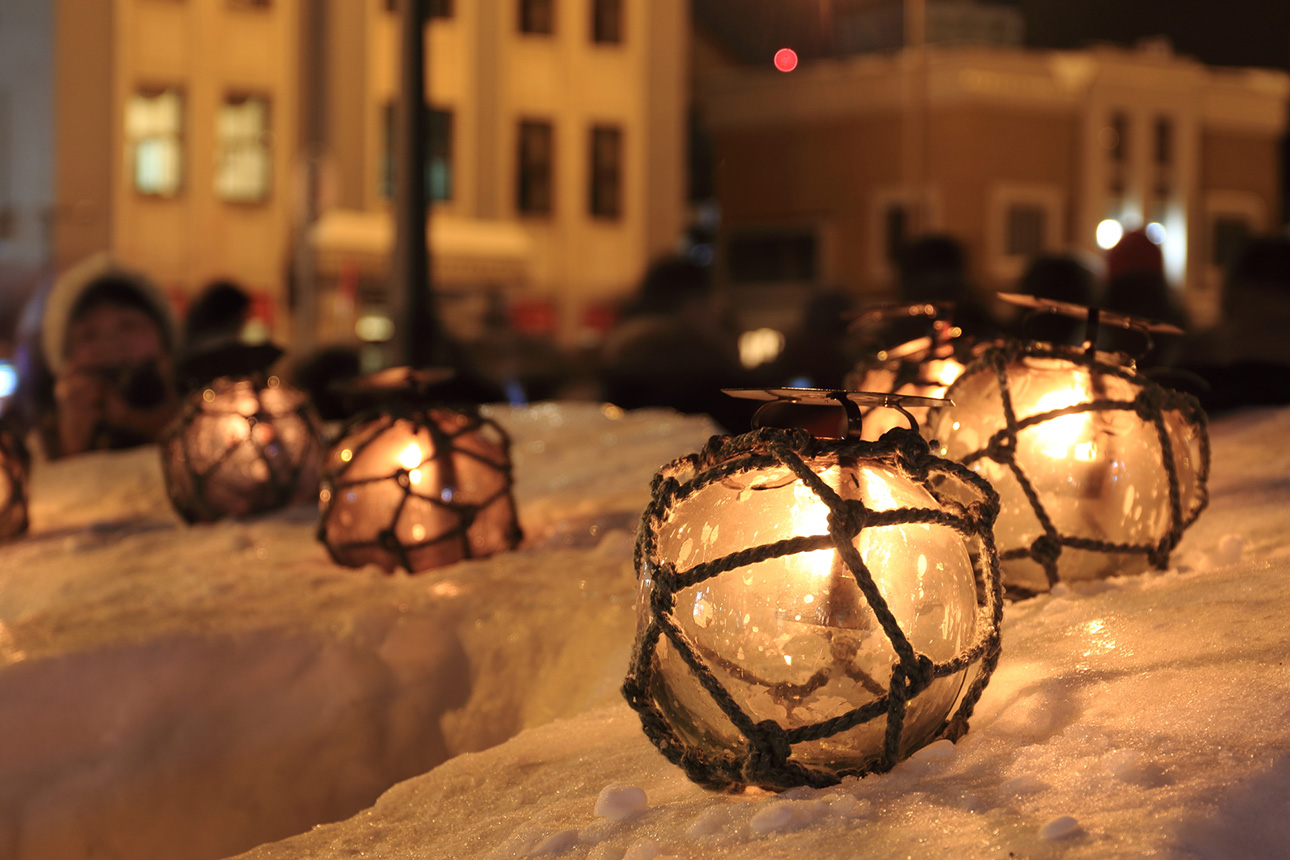
Lake Shikotsu Ice Festival
Lake Shikotsu, one of the lakes in Shikotsu-Toya National Park, is an hour’s drive from the centre of Sapporo. The Lake Shikotsu Ice Festival is held on the shores of this lake in February and lasts for about a month. The festival is a unique event where lake water is sprayed onto wooden frameworks with a sprinkler and frozen to create ice pillars of various shapes and sizes. The lake is the second deepest in Japan, with a depth of 180 metres at its deepest point, and is a lake that does not freeze even in winter. The ice pillars, made by deliberately freezing the water, shine in the sunlight during the day in a beautiful natural blue colour known as Shikotsu Blue, and are lit up in colourful lights at night, creating a mesmerising view.
After walking around in the bitter cold , why not enjoy some hot drinks and food at one of the shops lined up along the lakeside? There is a hot spring resort nearby, so it is also recommended to take a leisurely dip in the hot spring to warm your body to the core and relax.
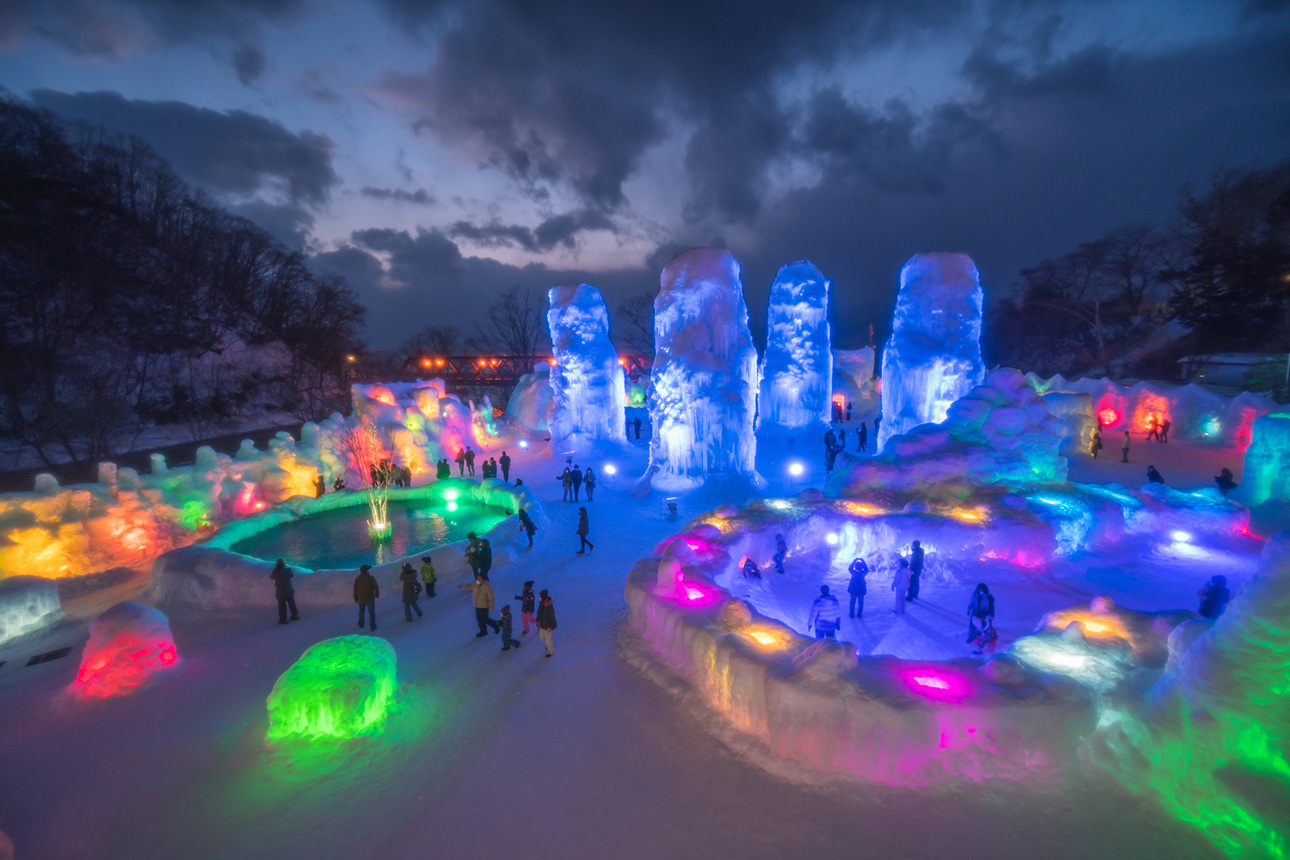
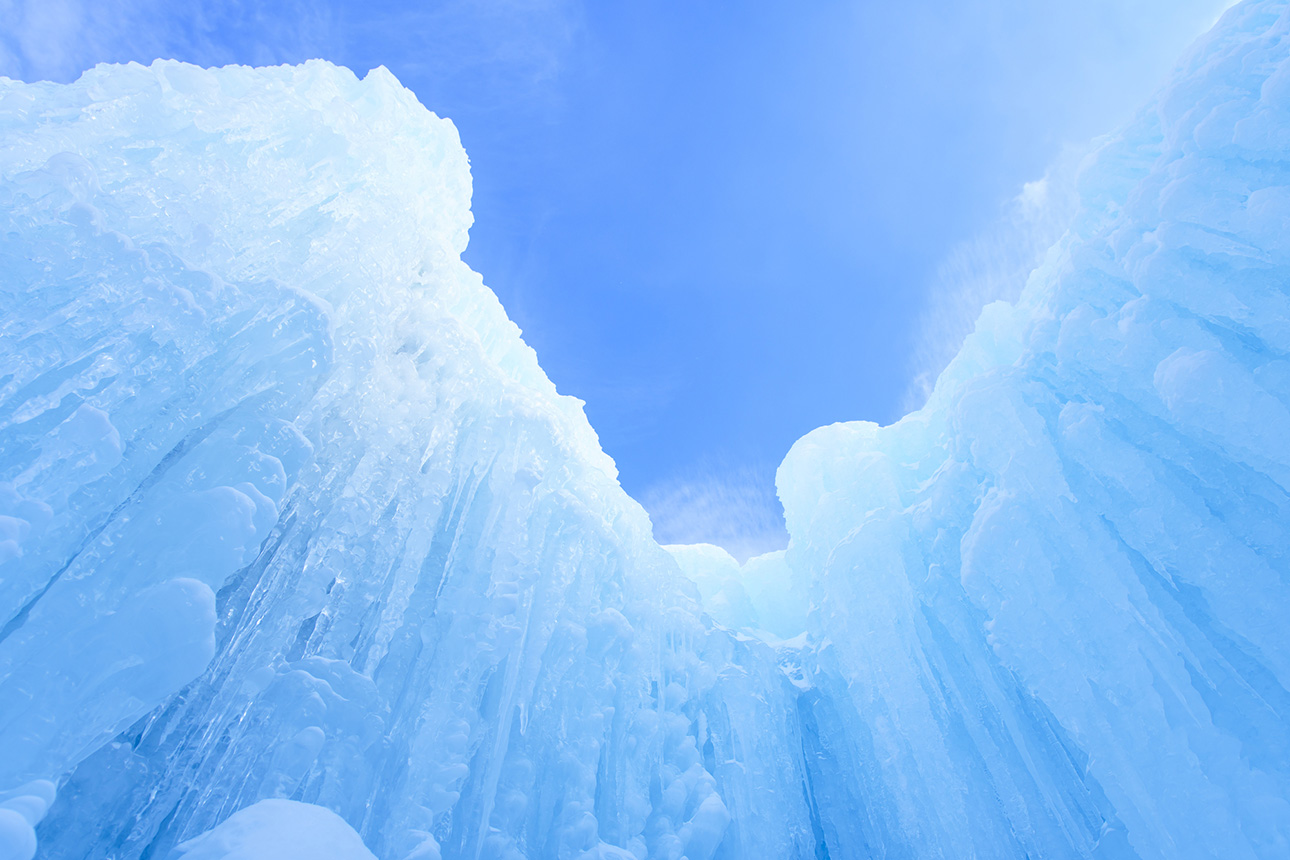
The Snow Festival: From Sapporo, Hokkaido, to the World
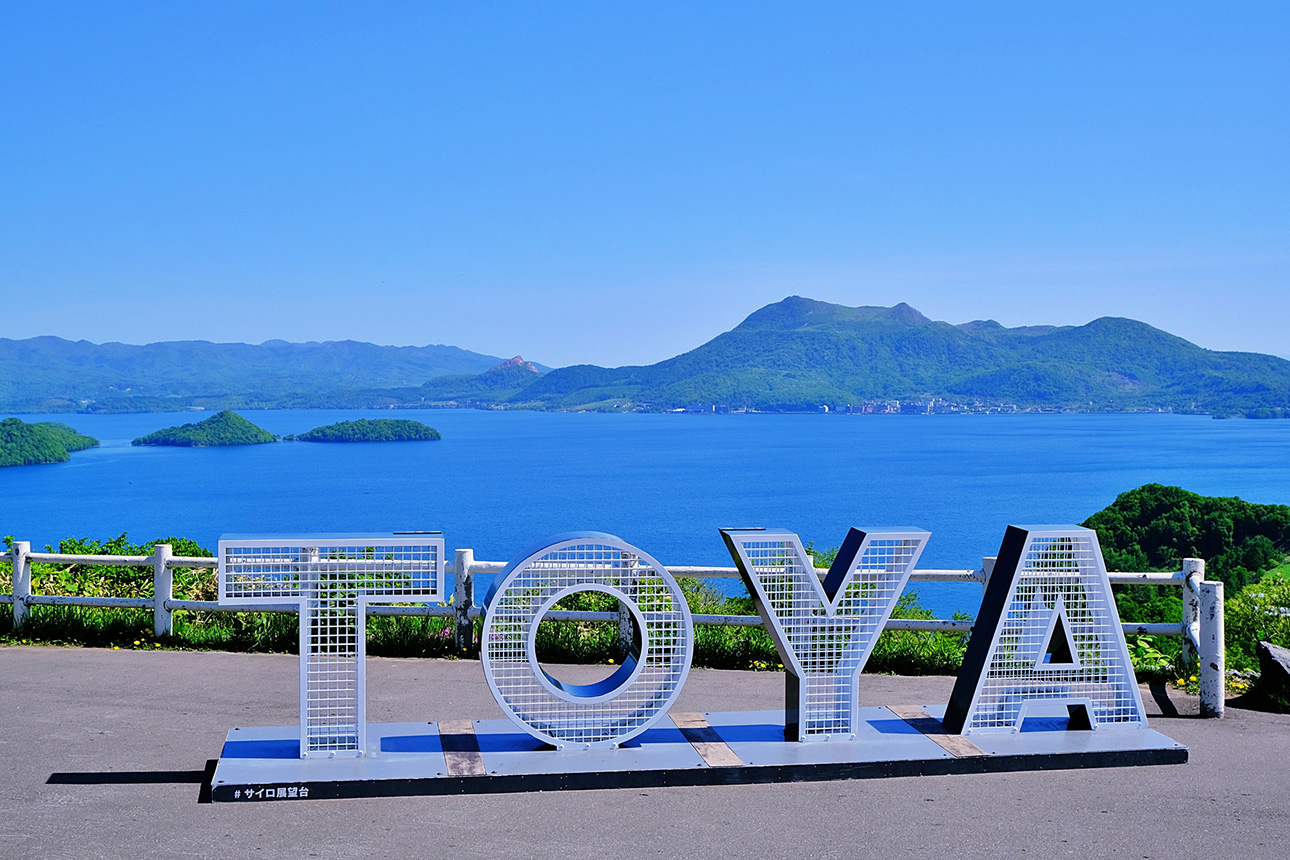
Hokkaido, where the Sapporo Snow Festival is held, is a veritable paradise of nature and one of the most popular destinations for Japanese tourists. Population-wise, it is significantly smaller than Tokyo, and is just one of Japan’s 47 prefectures. However, it has hosted various events that have put it on the global stage, such as the Sapporo Winter Olympics, the Toyako G8 Summit, and the World Cup Ski Jumping Championships.
The Sapporo Snow Festival, held in the prefectural capital of Sapporo, is the ultimate event that puts Hokkaido on the global stage.
It is one of the three major snow festivals in the world, along with the Quebec Winter Carnival in Canada and the Harbin Ice Festival in China, and the international attention it receives is unmatched by other winter festivals in Japan. Sapporo, with a population of 1.9 million, is the only city of that scale in the world that can maintain its urban functions despite having over 5 metres of snowfall each winter. This is why a major winter event like the Sapporo Snow Festival is possible.
Featuring eye-catching 15-metre-tall snow sculptures, among approximately 200 snow and ice sculptures of various sizes, the festival welcomes visitors to three venues. The snow and ice art, created with the skilled craftsmanship honed over many years, is truly breathtaking.
The festival offers more than just snow and ice sculpture displays, with a wide range of entertainment options, including gourmet food, ensuring that visitors are entertained throughout their stay.
Now, let us delve deeper into the charms of the Sapporo Snow Festival.
From Its Beginnings to the Present: The History of the Festival
The Sapporo Snow Festival began in 1950 to attract people to Hokkaido in winter. Six snow sculptures handmade by students from five junior and senior high schools were lined up in Block 7 of Odori Park, which was a snow dumping site, and the festival kicked off with great success, attracting 50,000 visitors. Considering that the population of Sapporo at the time was a mere 310,000, the number of visitors was by no means small, and the festival gradually grew to become a beloved winter tradition for the local people.
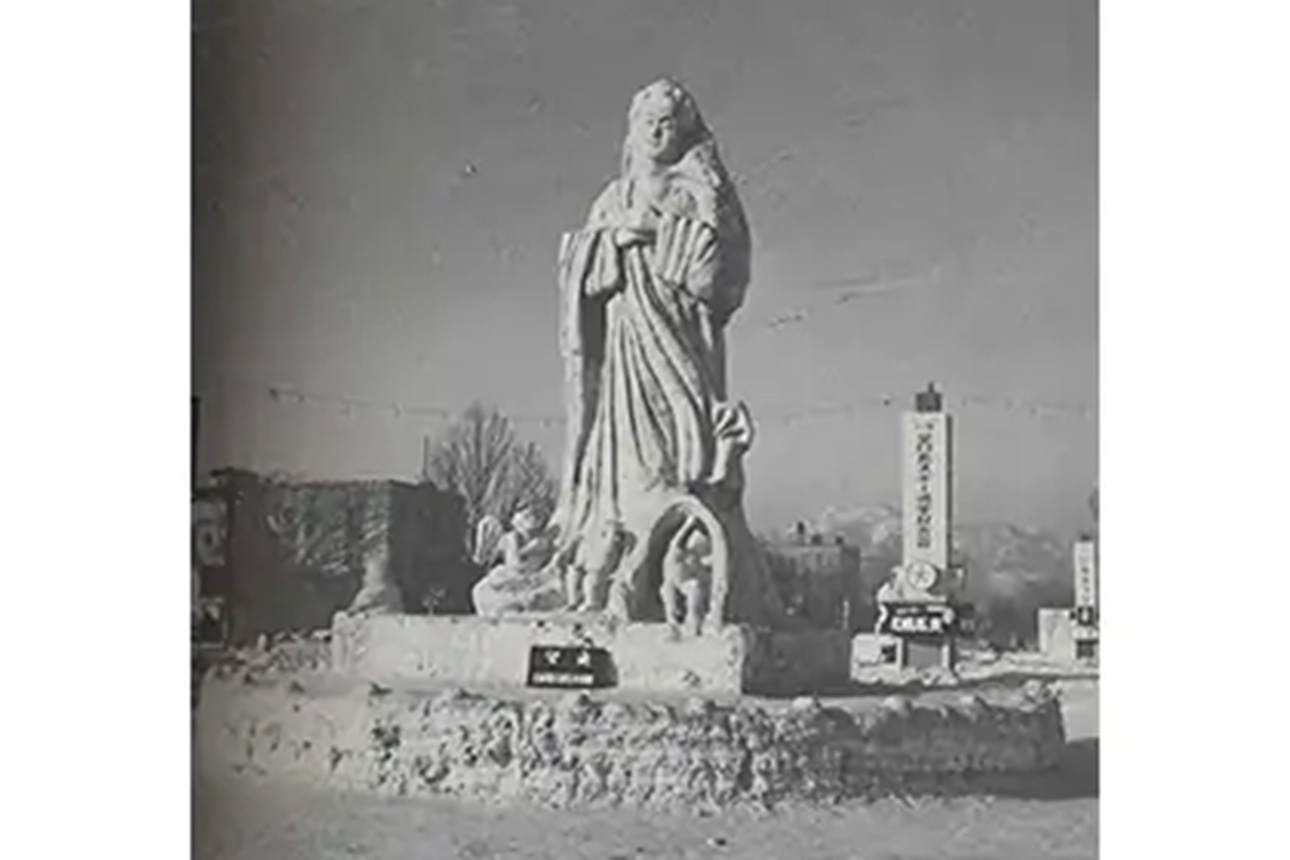
Initially, students and citizens were in charge of making the snow sculptures, but in 1955 the Ground Self-Defense Force also began participating as part of their training, and their 10-metre tall statue of the Virgin Mary attracted attention.
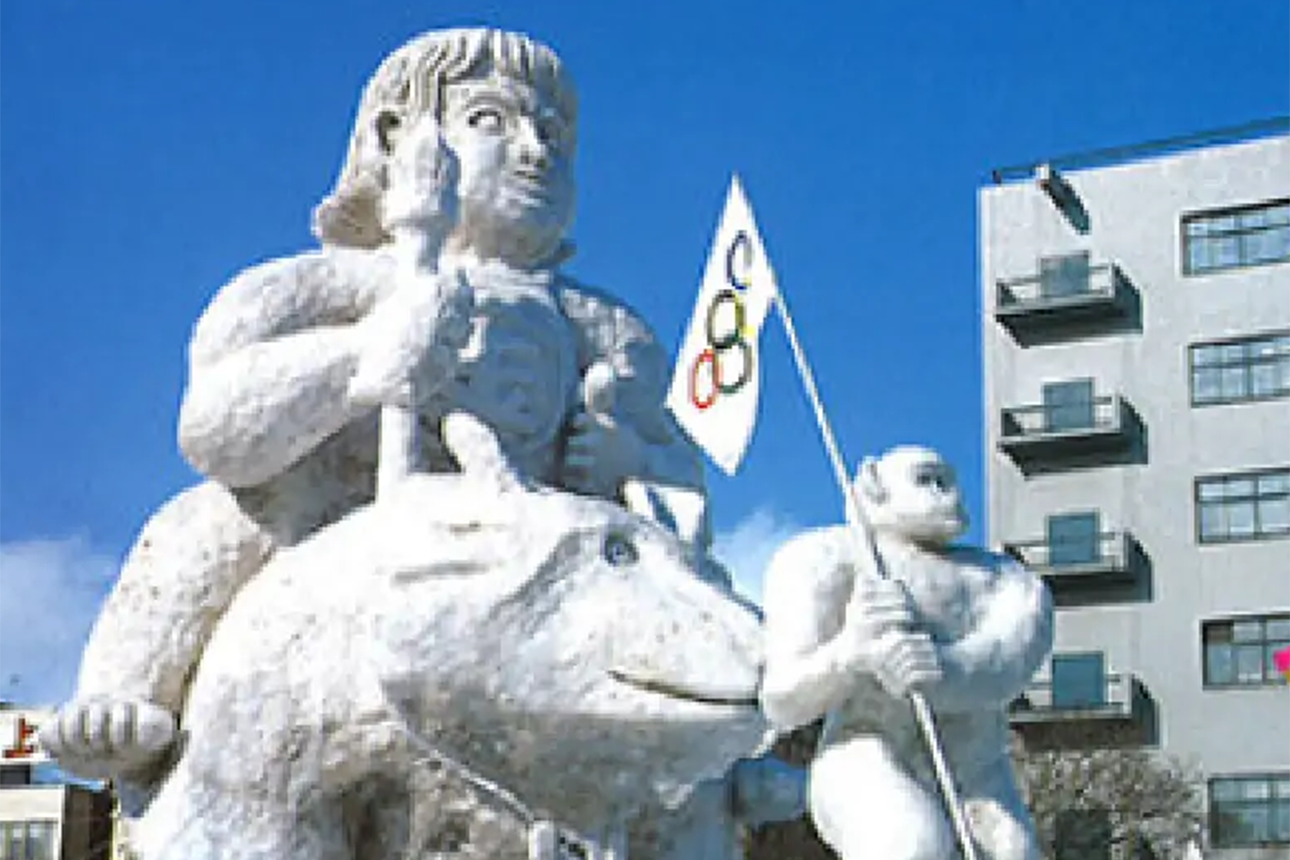
In the late 1950s, with the spread of television, media exposure started to increase, and the snow festival gained nationwide recognition. Furthermore, the 1964 Tokyo Olympics and the 1970 Osaka Expo, the first World Expo held in Asia, played a part in making the Sapporo Snow Festival known internationally, and of course, the 1972 Winter Olympics, the first in Asia, also served as an opportunity to promote the Sapporo Snow Festival to the world.
As the festival became known globally, an international snow sculpture competition was started in 1974, and the number of foreigners coming to see or participate in the festival gradually increased.
Not only did the number of visitors and snow and ice sculptures grow, but also in recent years, new technologies have been introduced, which has made new attractions possible such as projection mapping that started in 2013 (to be introduced later).
Despite frequent hardships such as fuel shortages caused by the oil crisis of the 1970s, and the warm winters and lack of snow that used to hit the festival once in a while and seem to impact it almost every year nowadays, and its suspension due to the COVID-19 pandemic, the Snow Festival has carved out a 75-year history and continues to enchant visitors to this day.
Highlights of Each Venue
The Snow Festival venues have changed over the years except for Odori Park, and currently there are three venues: Odori Park, Susukino, and Tsudome. Let’s take a closer look at each venue and what makes them unique.
Main venue: Odori Park
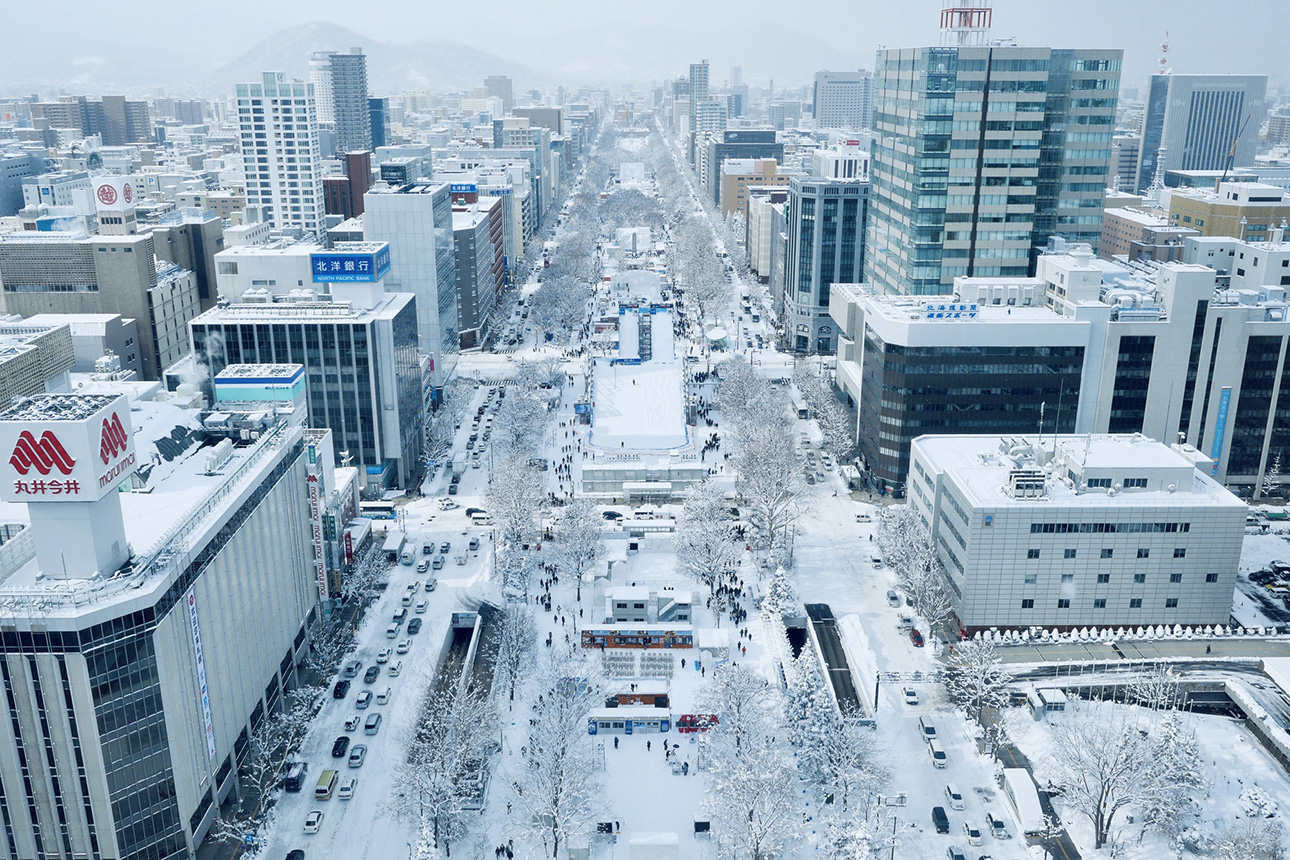
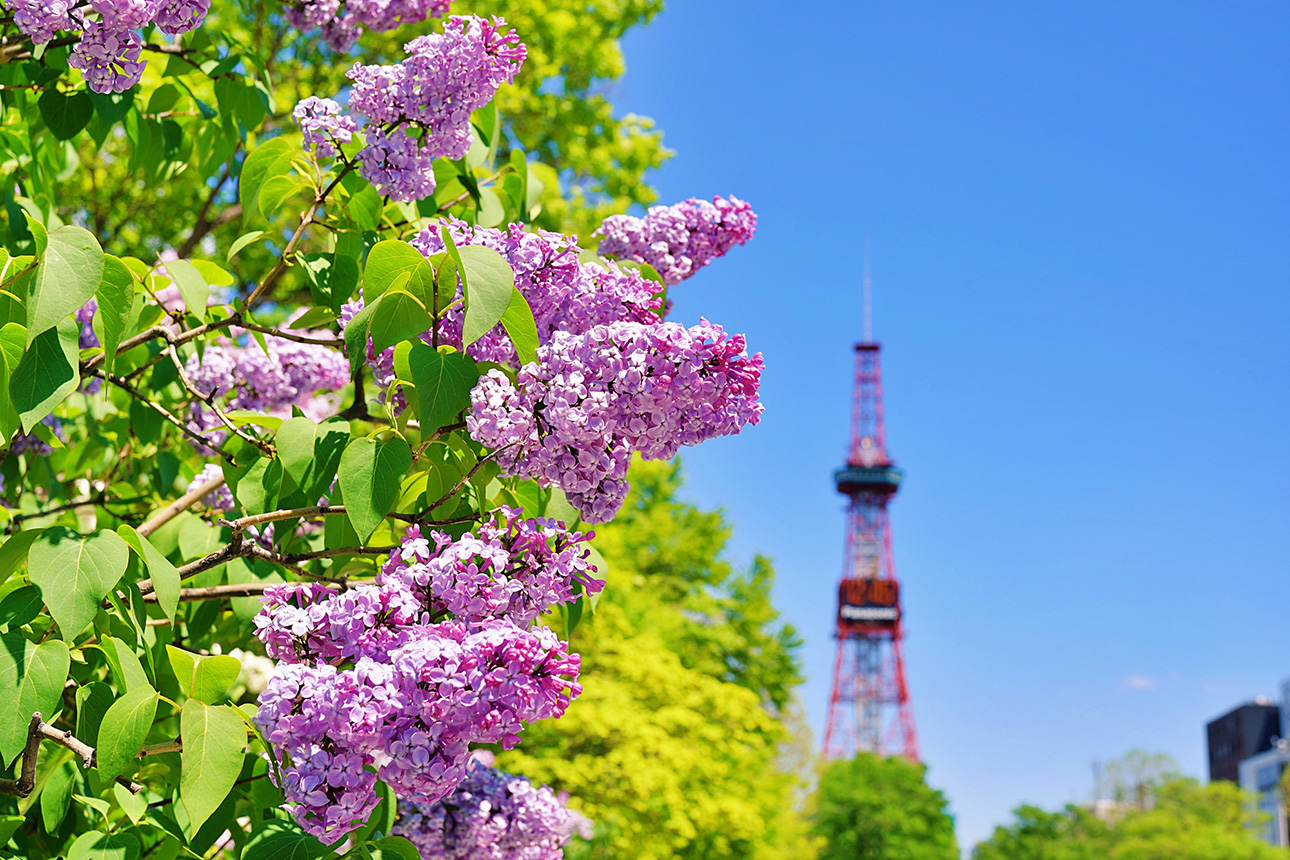
Odori Park is a 1.5-kilometre-long park which starts from Sapporo TV Tower. Originally built as a firebreak dividing the city into north and south, it is now a park, a place of relaxation for citizens, and also serves as an event venue hosting a variety of seasonal events: the Lilac Festival in May; the Yosakoi Dance Festival in June; and the White Illumination and the Munich Christmas Market, inspired by Sapporo’s sister city, Munich, from late November to Christmas. Of them all, the most famous and popular event is the Sapporo Snow Festival.
<Large snow sculptures>
The main attraction of this venue is, of course, the approximately 130 snow sculptures. Among them, the five large snow sculptures are the highlight. These 15- to 20-metre-tall snow sculptures, created by the Japan Ground Self-Defense Force and the Sapporo Snow Festival Large Snow Sculpture Committee, which includes Sapporo City employees, an NPO, and the Sapporo Tourism Association, are truly spectacular. Each large snow sculpture uses approximately 2,500 tons or 500 five-ton trucks of snow. The construction process, including snow transportation, takes about one month. The Ground Self-Defense Force and the Snow Sculpture Committee, with the assistance of a large number of citizen volunteers, utilize their years of experience and expertise to create this snow art that overwhelms and captivates all who see it.
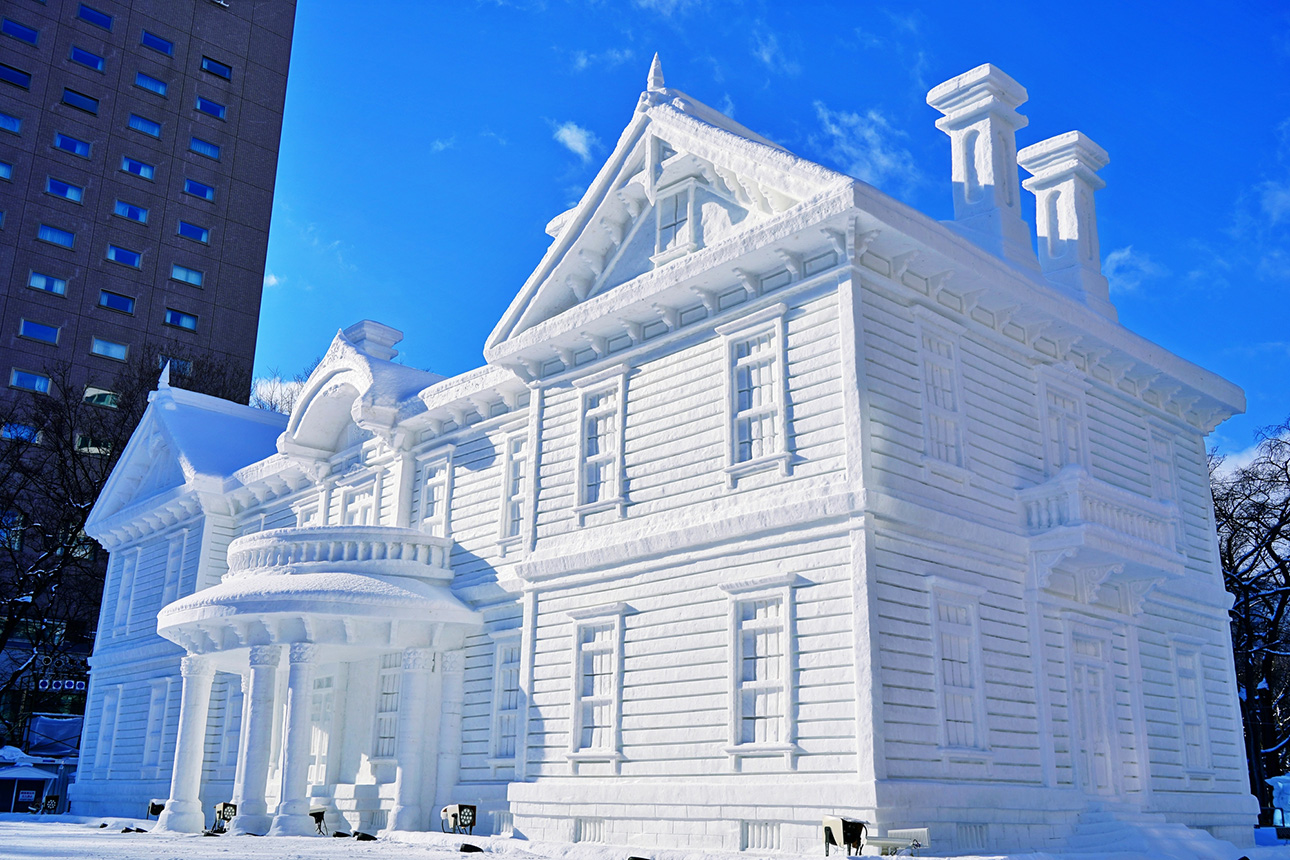
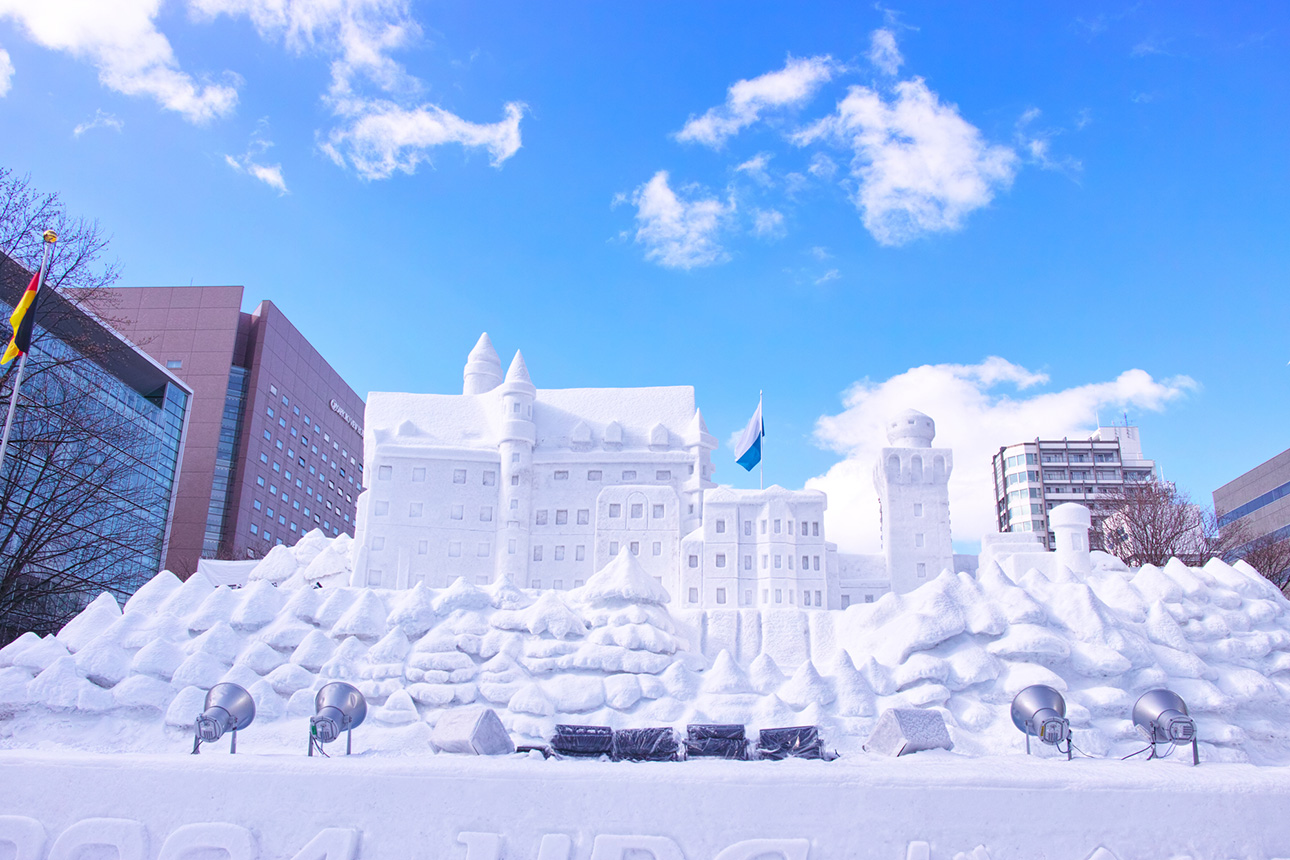
<Citizens’ Snow Sculptures>
Approximately 80 small snow sculptures created by citizens are on display as well, and a popularity contest is held. Every year, many teams want to participate, and the number of applicants is 5 to 6 times the number of places available. The snow sculptures that each team completes in the limited time of just 5 days are rich in variety and never get boring. In 2025, the snow sculpture of Shohei Otani, who is currently active in the US major league baseball team the Dodgers, came in third in the popularity vote. According to one of the members of the team that created it, the appeal of making a snow sculpture lies in “the thrill of creating something from scratch and seeing people enjoy it at the snow festival.”
These snow sculptures, sweated over by the citizens who craft them, have a charm distinct from the larger-scale snow sculptures.
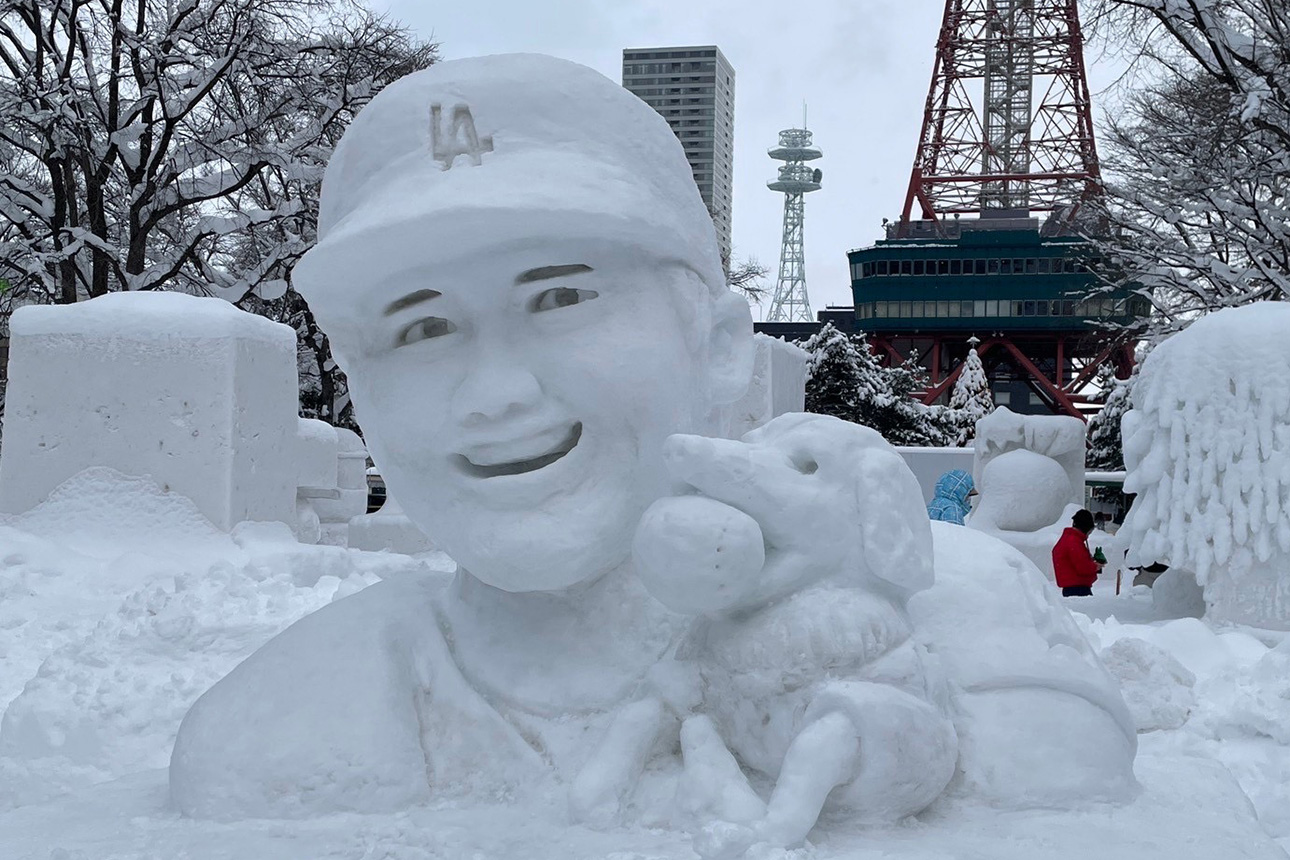
<The International Snow Sculpture Competition>
It’s not just Sapporo citizens who can participate in snow sculpture making. Each year, around 10 teams participate in the International Snow Sculpture Competition. They come not only from Sapporo’s sister cities and other cold countries and regions similar to Sapporo, but also from tropical countries. These teams brave the cold to enliven the festival.
During the festival, this is the only place in the Odori Park venue where you can see the actual snow sculptures being made. Witnessing the large blocks of snow gradually take shape is a rare and memorable experience.
Susukino Ice World with Ice Sculptures

Known as one of Japan’s three major entertainment districts, the neon-lit downtown Susukino is transformed into an ice world during the Snow Festival, with ice sculptures lining the main street. Beyond the welcome gate, you’ll find 60 unique small and medium-sized ice sculptures that have been entered into the ice sculpture competition, in addition to a huge sheet of ice that encapsulates real fish such as salmon and crab inside. Amazingly, the main creators of the ice sculptures are chefs working at hotels and other establishments. There’s also a live demonstration corner where you can watch chefs transforming ice into beautiful works of art, using chainsaws and chisels instead of cooking knives. During the festival, the main street becomes a pedestrian-only zone, and the ice sculptures are illuminated until 11 PM, allowing visitors to enjoy the icy artworks at their leisure. The bustling entertainment district is home to thousands of restaurants and bars, many of which stay open past midnight, so you can continue enjoying food and drinks after exploring Ice World.
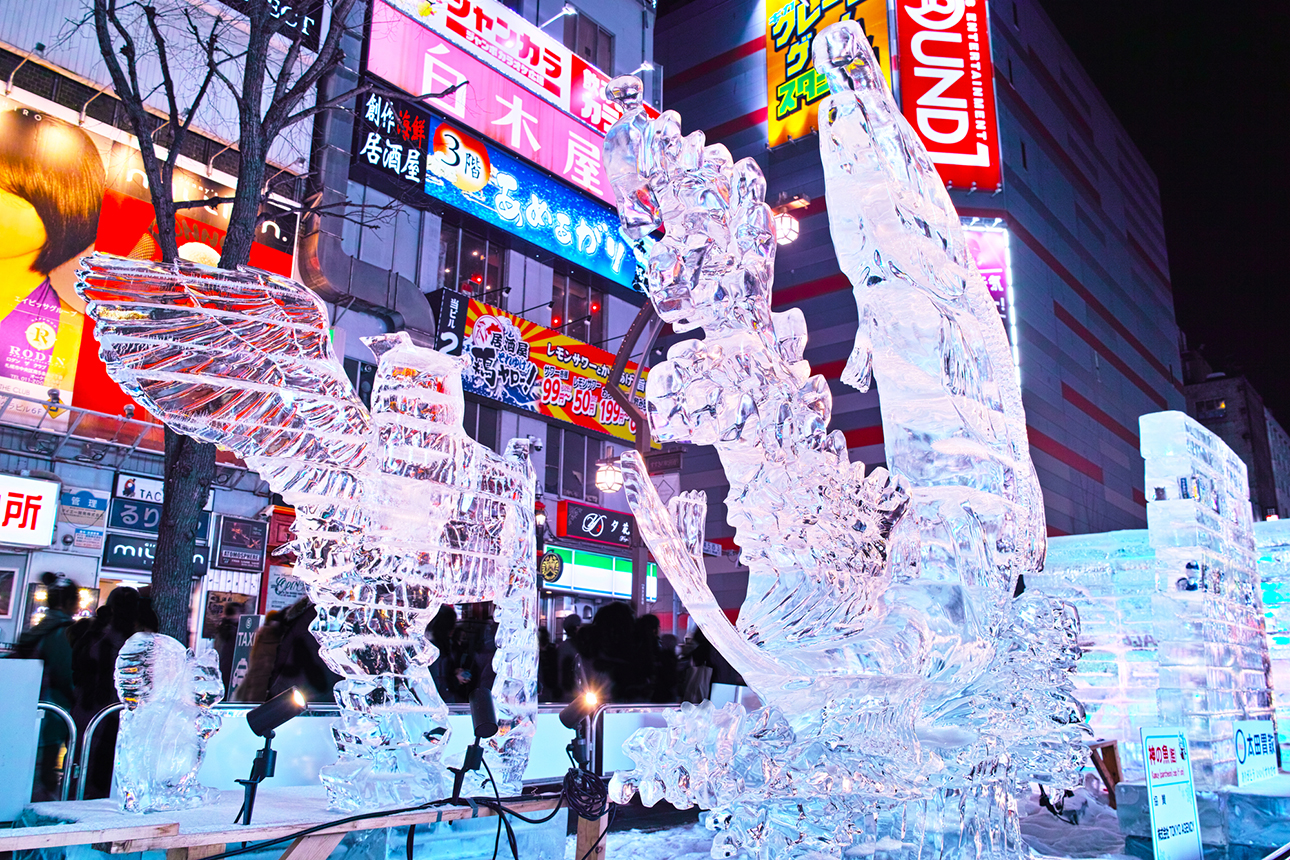
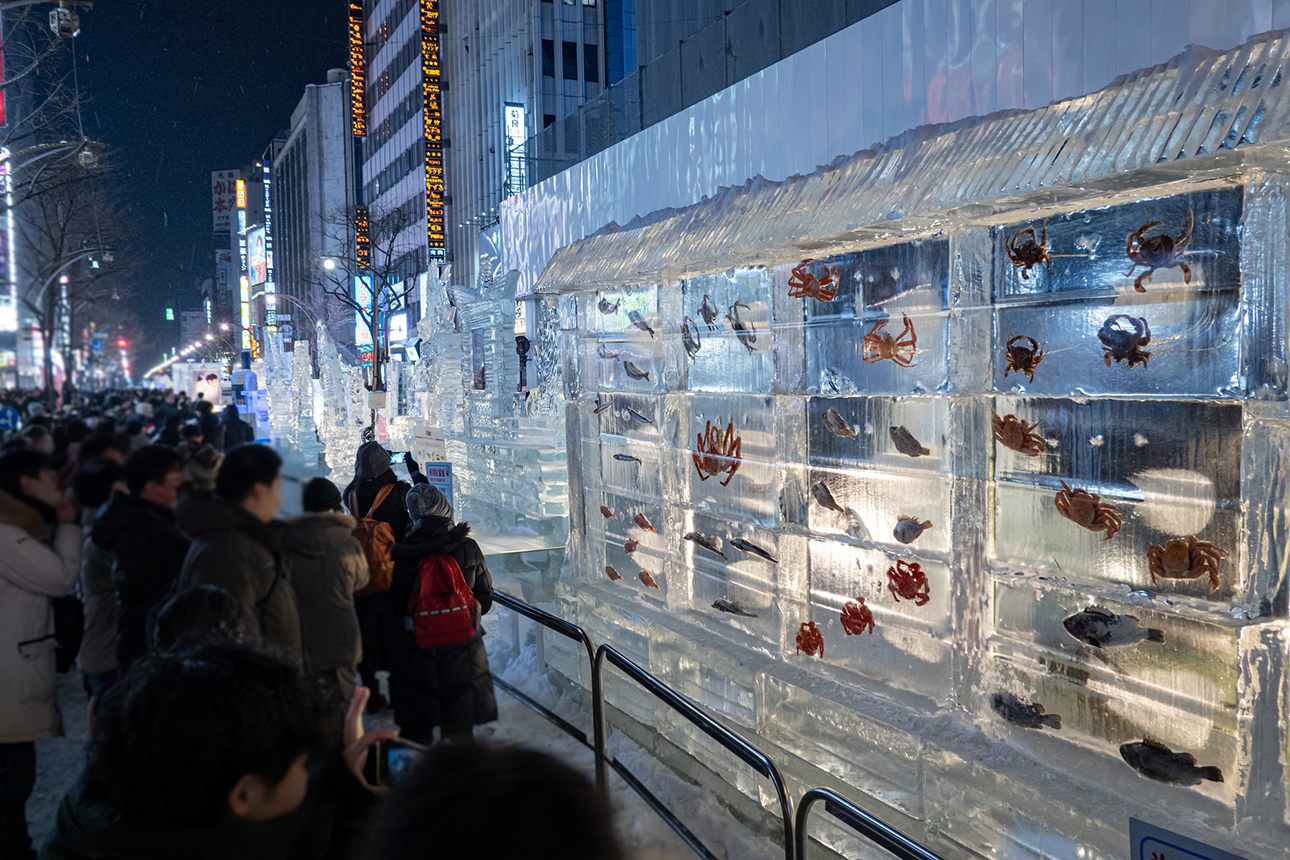
An Experience-based Venue: Tsudome
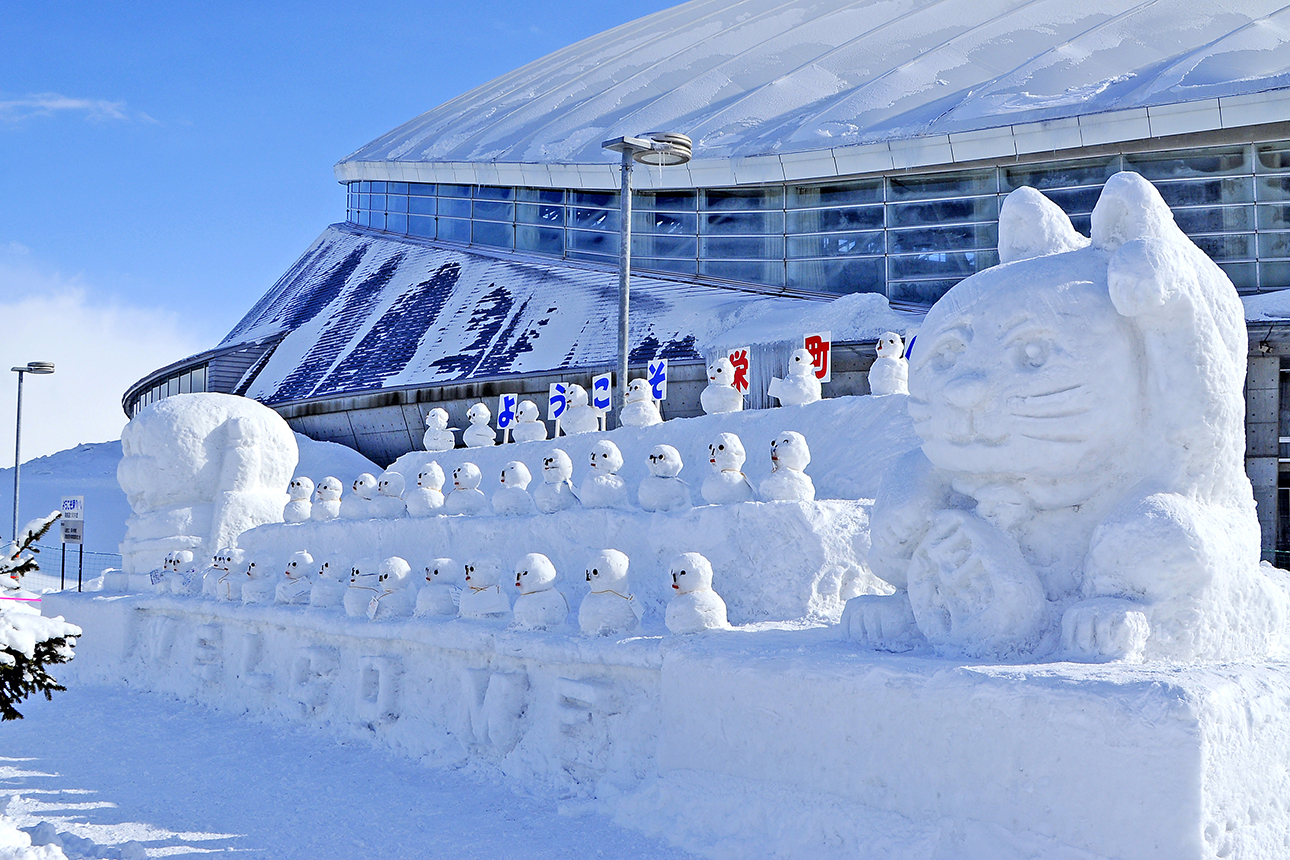
Tsudome is an all-weather facility owned by the City of Sapporo, and is often used as an event venue. Based on the concept of “a place where everyone from children to adults can play” and “a place where you can experience something unique to Hokkaido”, over 10 handmade snow sculptures welcome visitors, and a variety of attractions are available both indoors and outdoors: a large tube slide; a course where you can enjoy sledding; snow rafting where you are pulled by a snowmobile and slide down the snowy fields; a snow maze; a giant slide; and “Into the Snow”, a spot where you can get stuck in a wall of snow and take photos. The attractions that not only children but also adults can enjoy make the venue perfect for families.
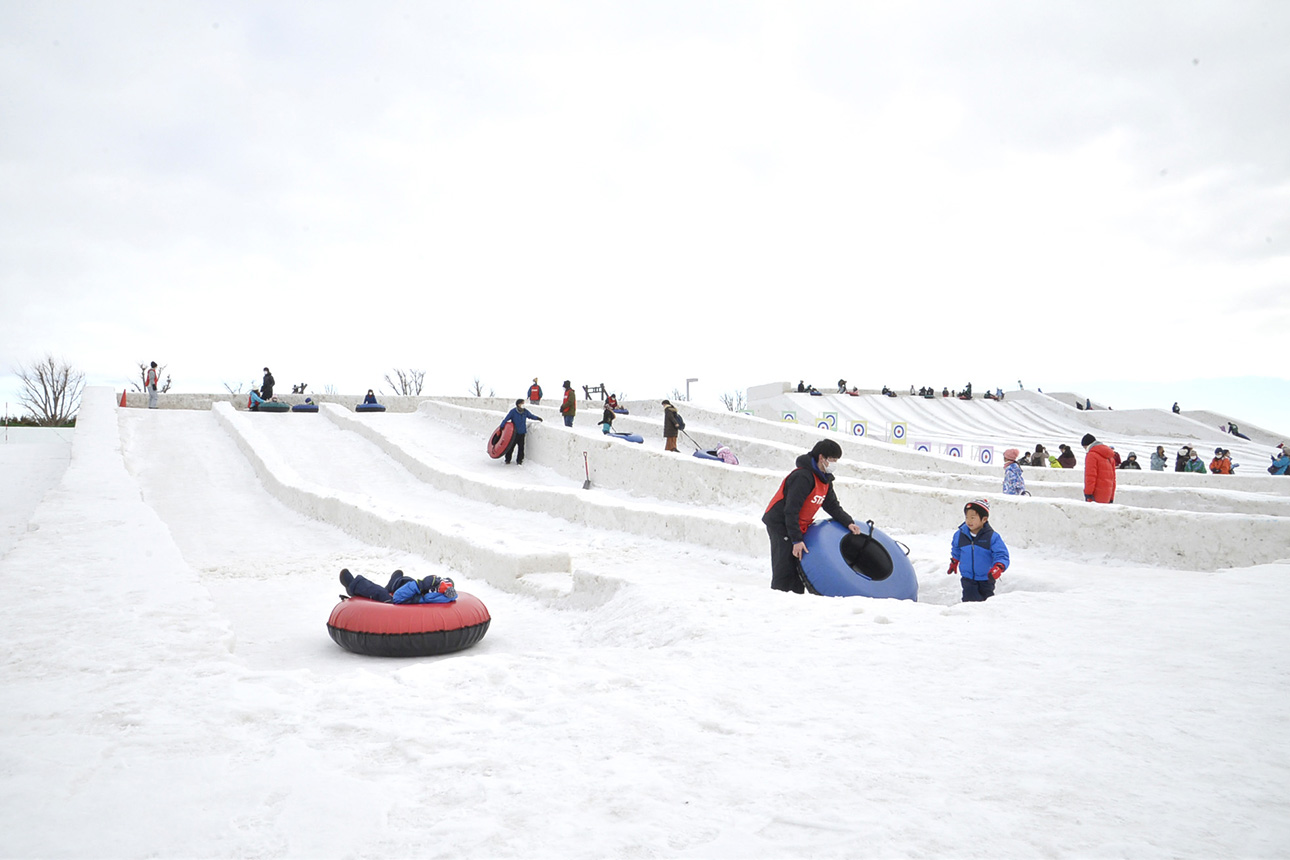
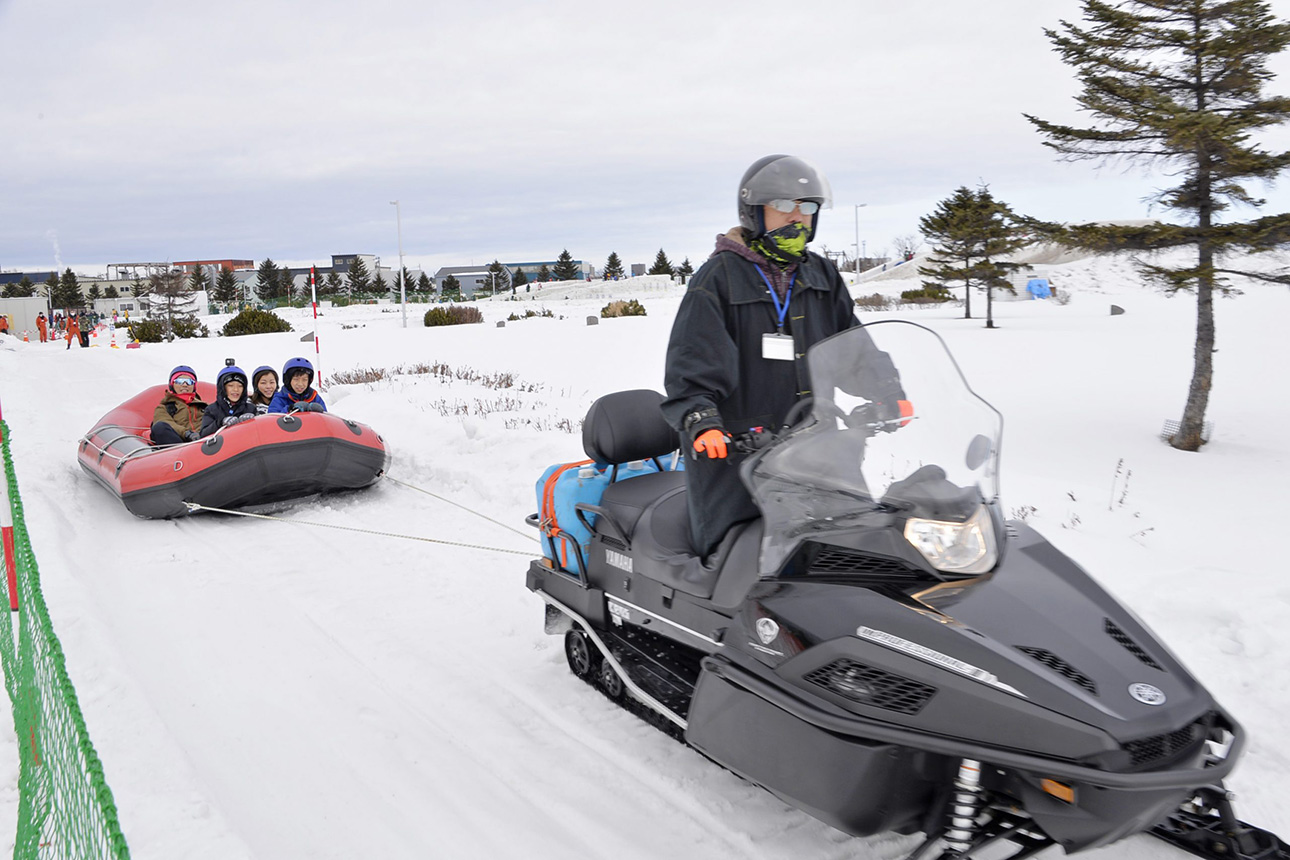
Behind the Snow Festival
There are many secrets to the Sapporo Snow Festival that cannot be discovered just by looking at it from the outside.
Let’s take a peek at some of them.
How are the giant snow sculptures made?
It’s amazing how they make such huge yet elaborate and artistic snow sculptures, isn’t it? In fact, the Sapporo Snow Festival Large Snow Sculptures Production Committee and the Self-Defense Force use different production methods.
<Carving Method Used by the Large Snow Sculpture Production Committee>
(1) Base construction: Approximately 1,000 to 1,500 tons of collected fluffy snow are piled up and compacted to create a massive rectangular block of snow that is as hard and solid as ice.
(2) Rough carving: A scaffold is built, and chainsaws and special shovels are employed to carve out the rough shape.
(3) Snow mixing: “Decorative snow” (化粧雪) is created to be applied to the surface of the snow sculpture. This is made by mixing clean snow with water and kneading it into a sherbet-like consistency. This mixing process is extremely labour-intensive, so it is done in shifts.
(4) The prepared decorative snow is applied to various parts of the snow sculpture, and then shaped using scraping tools until the final form is achieved.
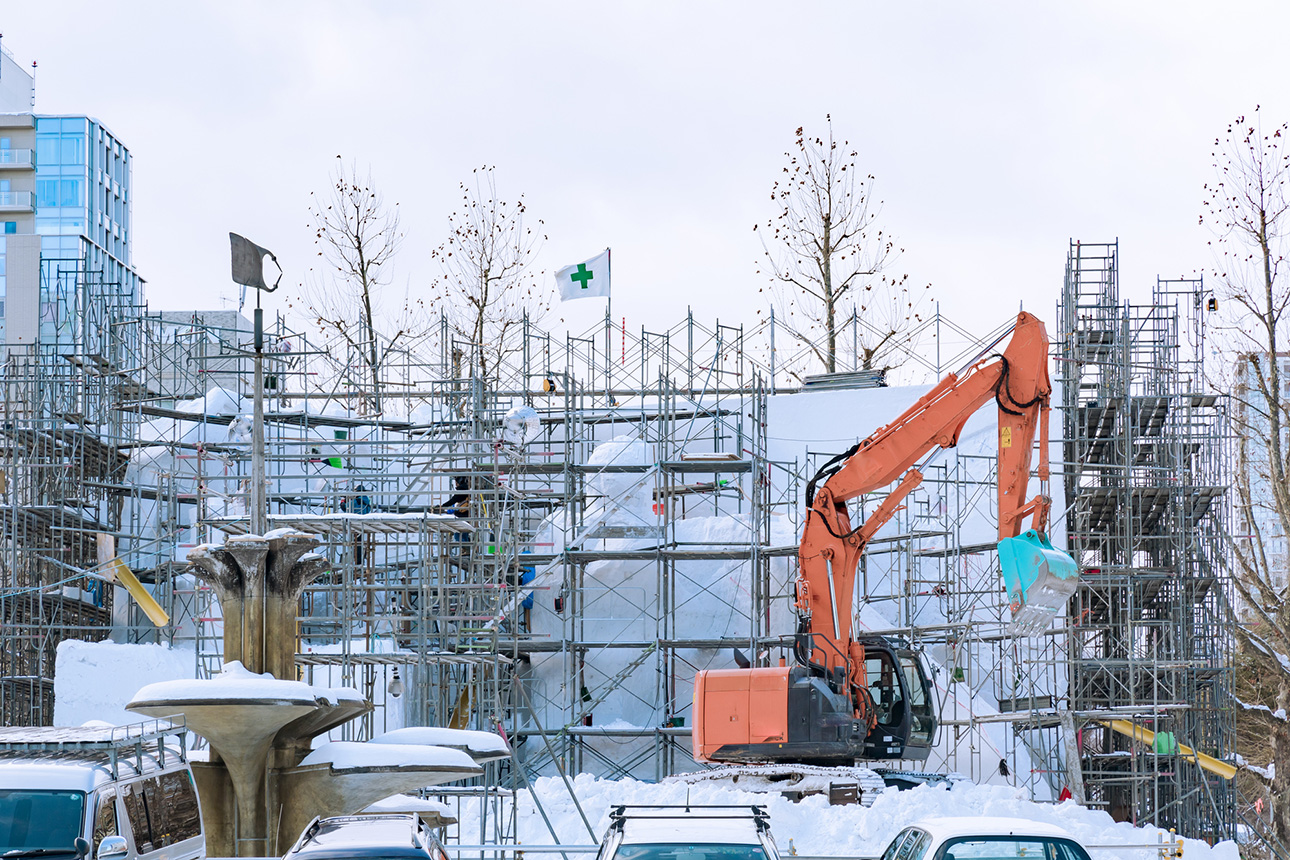
<Ice Block Technique Used by the Ground Self-Defense Force>
This method is unique to the Self-Defense Force, which can mobilize large numbers of personnel at once.
(1) Up to the rough carving, the process is the same, creating the main body of the snow sculpture.
(2) Thousands of tons of clean snow are compacted to create several ice blocks approximately 20 metres long.
(3) The ice blocks are cut into appropriate sizes, carved into shape, and refined. Impurities are removed, and the final polishing is done by hand to achieve a smooth, marble-like finish. Polishing dozens of pieces by hand is a labour-intensive task. Hand warmers and hand cream are essential equipment. When one of the historical structures in Japan was recreated as a snow sculpture, for instance, over 4,500 parts were prepared.
(4) Ice block attachment: Decorative snow (化粧雪) is mixed with water and used to attach the ice blocks to the main structure. It may not be successfully attached when the temperature is high, so the work is often done at night. This technique gives the snow sculpture a more three-dimensional appearance.

When the process of designing the snow sculptures is included, both methods require a significant amount of manpower and time. Knowing that it takes such skill and effort to complete a snow sculpture, the excitement and appreciation you feel when you see it are even greater, aren’t they?
No discarded snow is used
Sapporo City receives 5 metres or more of snowfall in one winter. You may think it would be efficient to recycle the snow that has fallen at the venues or the snow from the 70 or so snow dumping sites in the city, but experiments have shown that snow contaminated with impurities easily melts when temperatures rise, so they use clean snow that is brought in from the suburbs where it has not been touched by human hands.
The theme of the snow and ice sculptures
Since 1978, the unified theme for the Snow Festival has been “World Square of Pure White Dreams,” and the designs of the snow sculptures and ice sculptures created under this theme are diverse. Each year, people look forward to seeing what designs will be chosen, ranging from historical buildings from around the world and Japan, to popular anime and game characters, as well as sporting events. For example, ahead of the 1964 Tokyo Olympics, there were sculptures inspired by the Olympics; during the celebration of the 200th anniversary of American independence, the Statue of Liberty was featured; when the manga Golden Kamuy featuring an Ainu girl, a member of Hokkaido’s indigenous people, became popular, a snow sculpture was created to depict the story; and when the local baseball team’s ballpark, ES CON FIELD, debuted, a snow sculpture featuring the stadium and the team’s manager was unveiled. There are always sculptures that reflect events of the time.
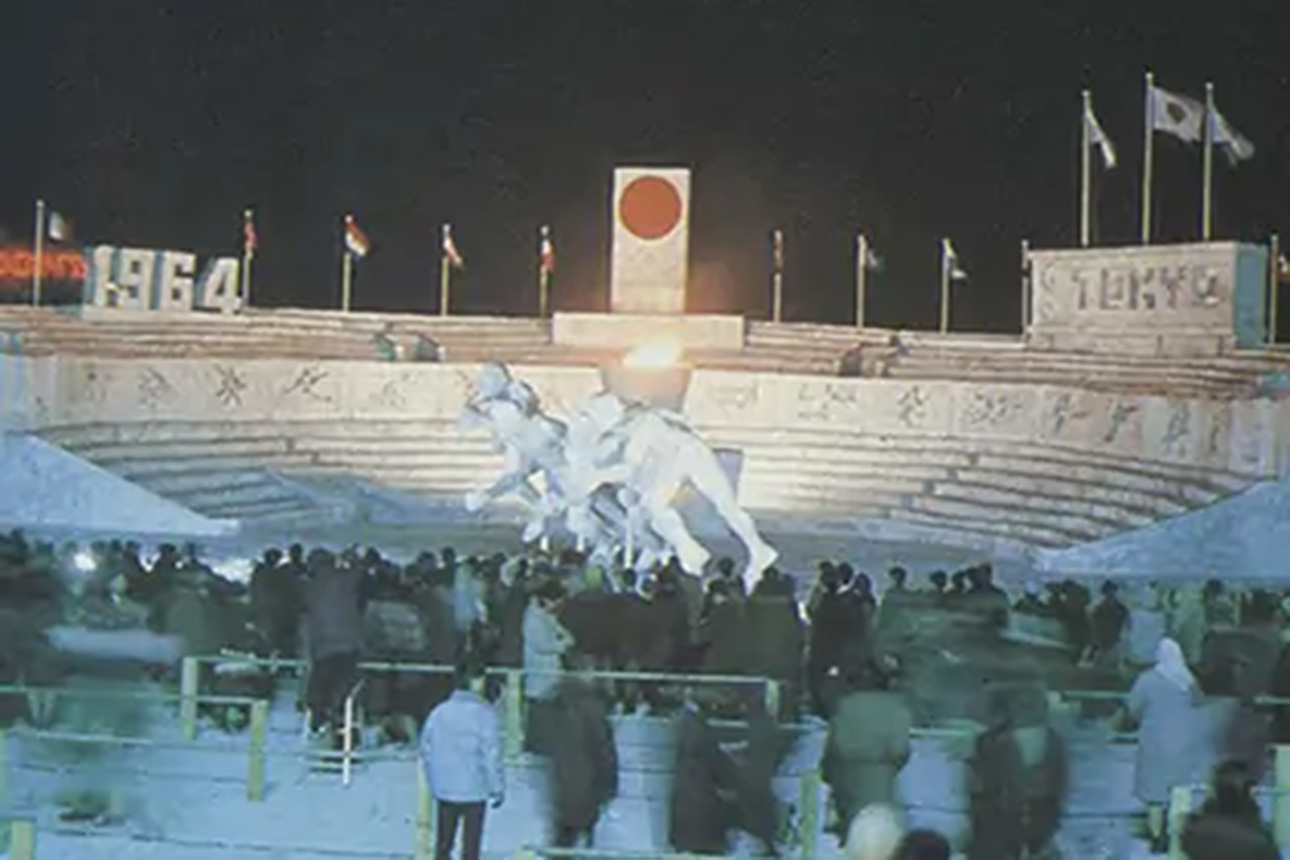
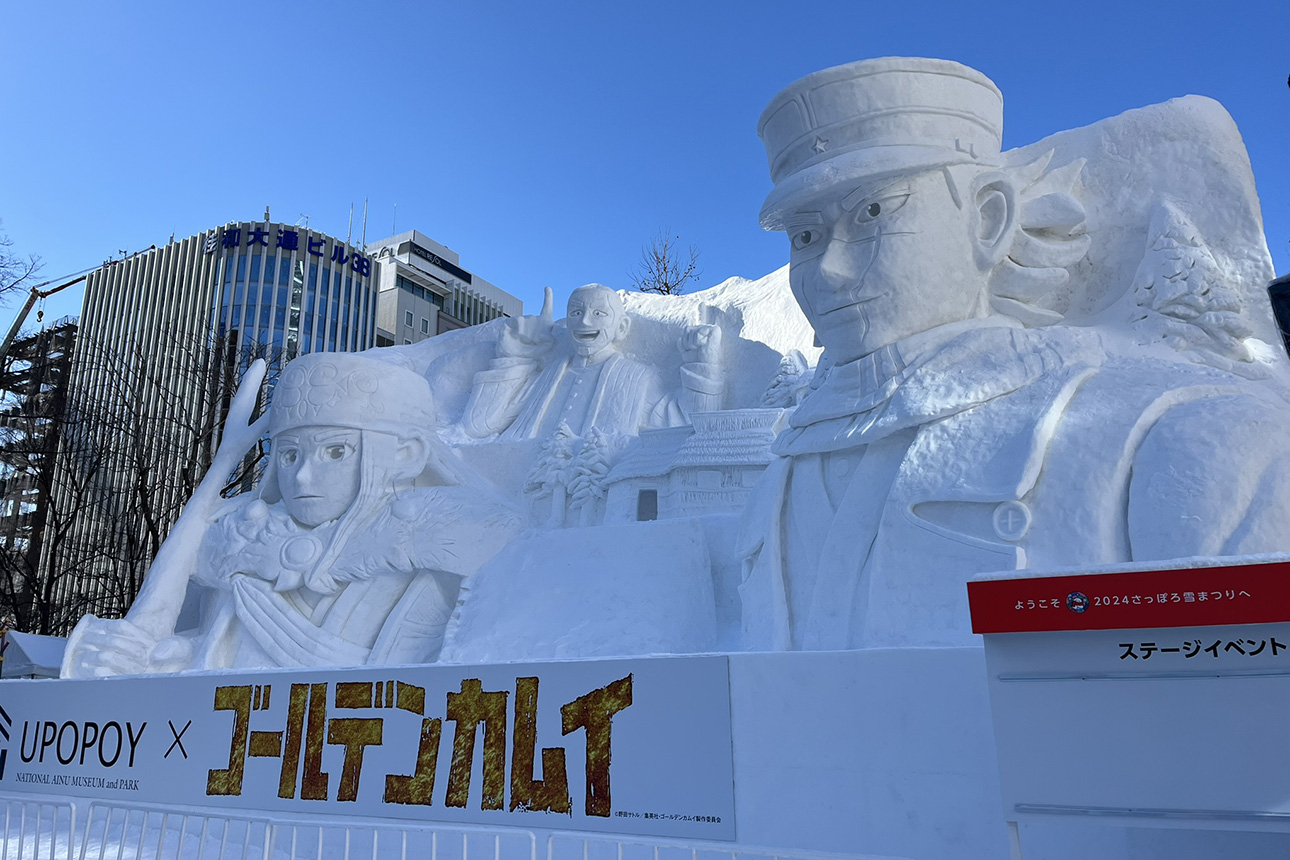
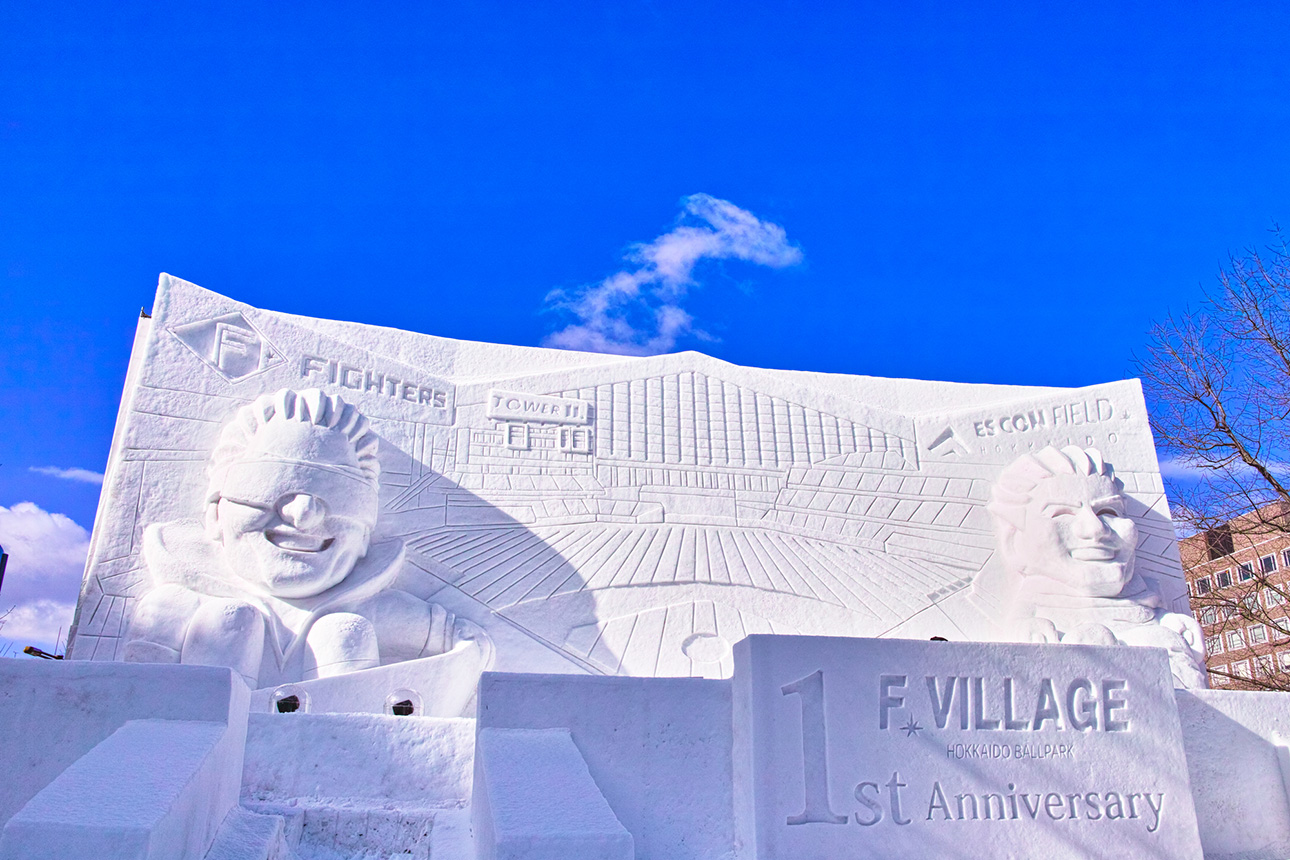
A Wide Range of Entertainment
In addition to simply appreciating the snow and ice sculptures, many other ideas are introduced to entertain visitors.
Night Snow Festival: Projection Mapping
The Odori and Susukino venues are illuminated at night, revealing a magical, otherworldly atmosphere different from daytime.
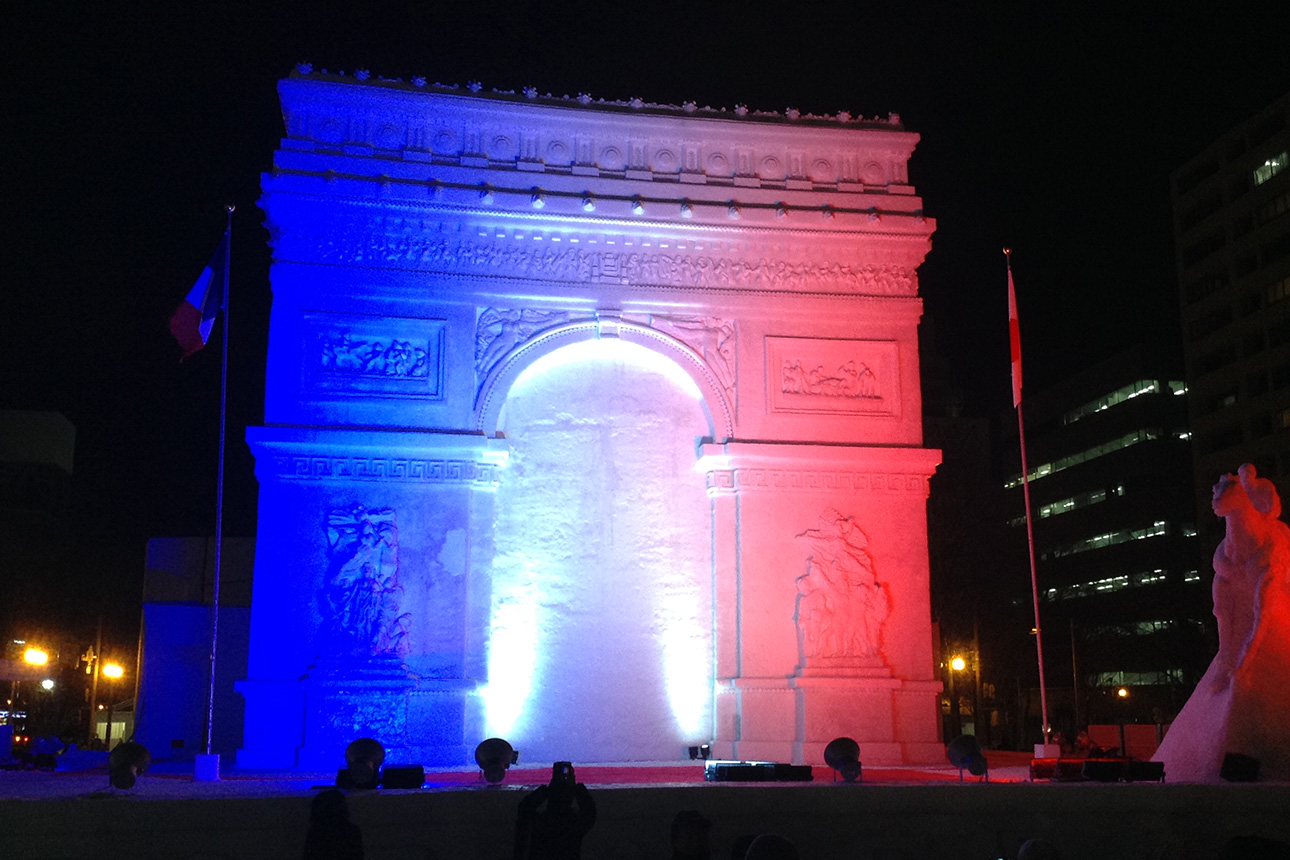
Additionally, projection mapping, which began in 2013 as mentioned before, has become a popular attraction. Two massive white snow sculptures at the Odori venue serve as screens, and colourful, story-driven visuals accompanied by immersive sound effects create a must-see spectacle.
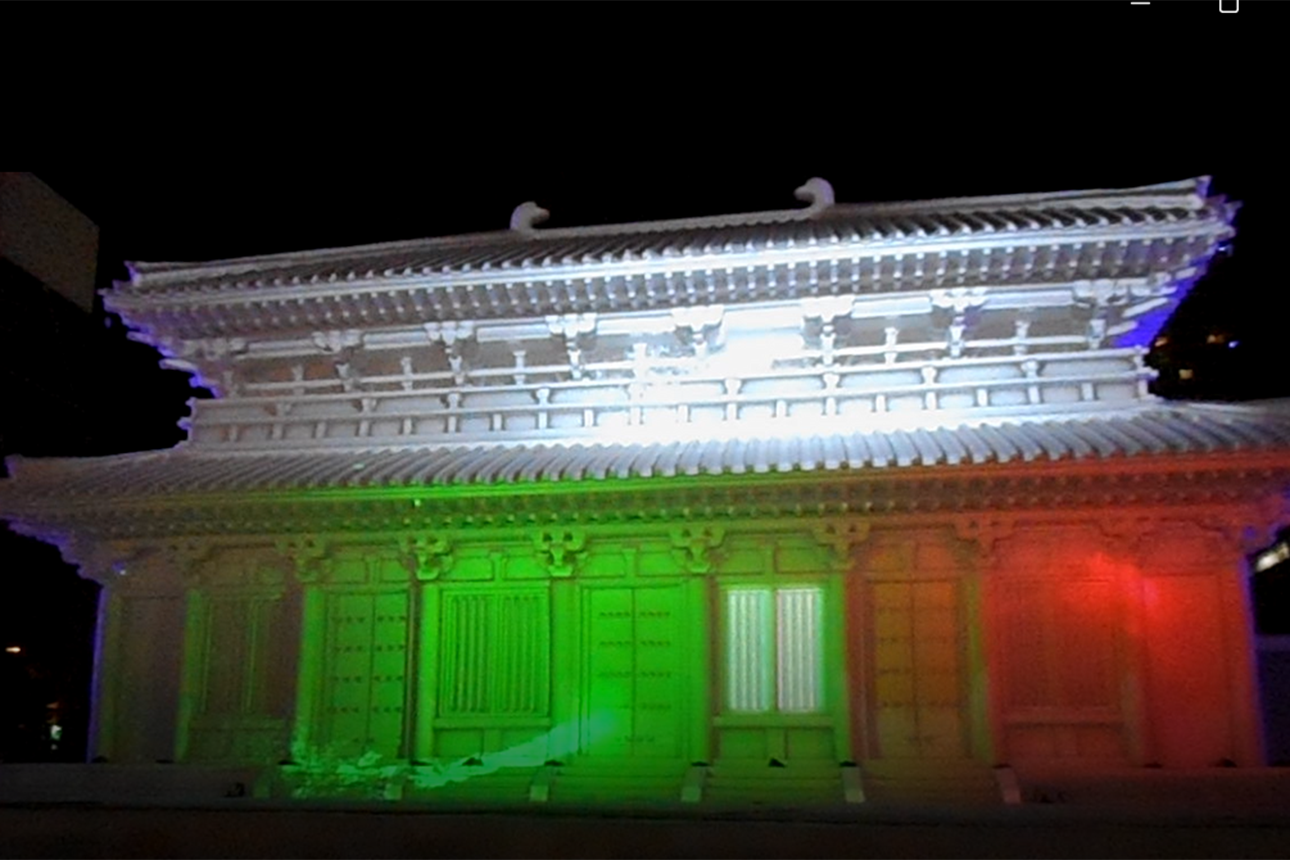
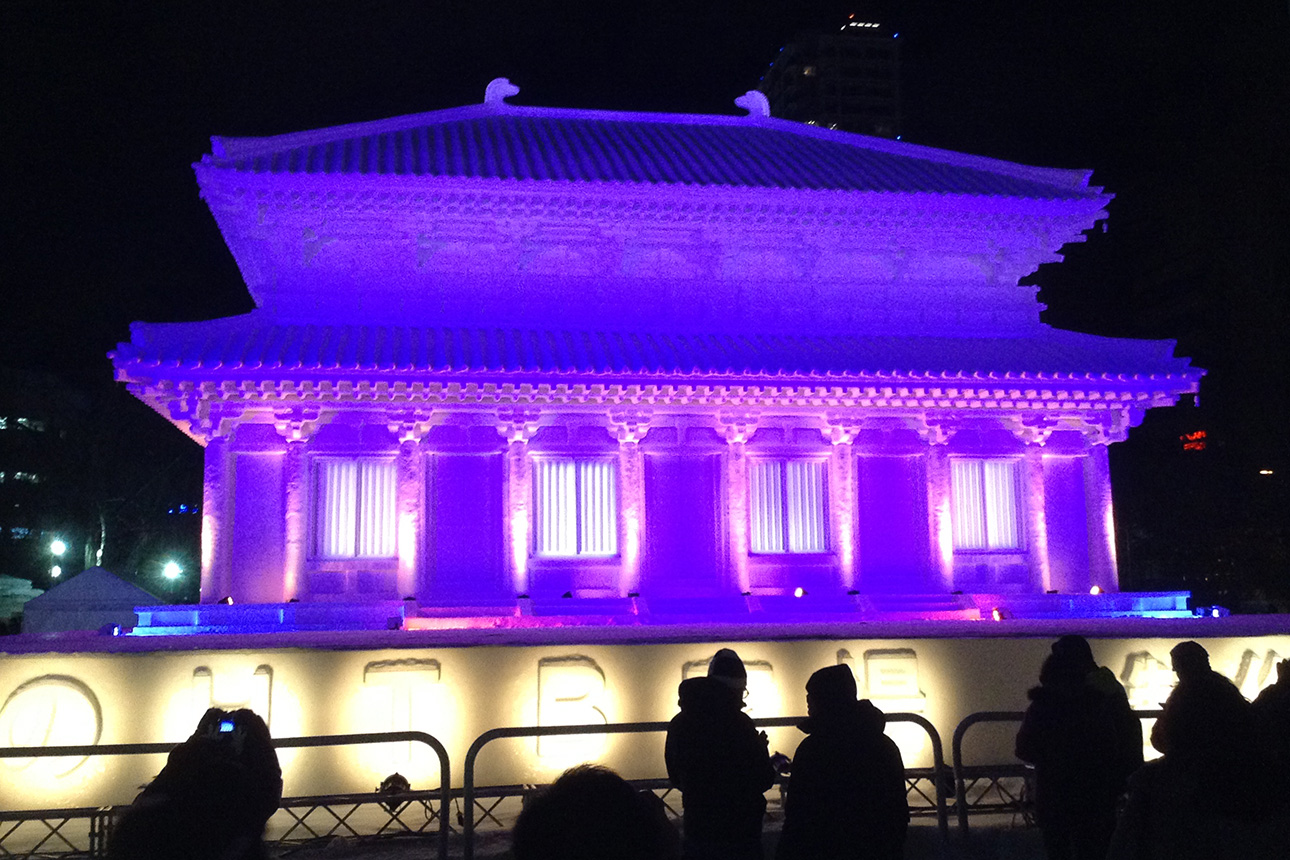
Other attractions including live events
There have been different attractions introduced, including a snowboard jump session, a curling rink, and a skating rink. In 2025, there were an aroma foot bath experience, snow surfing and skateboarding experiences using snowboards that can be enjoyed without changing into special boots, a skating rink, a tube slider, and more.
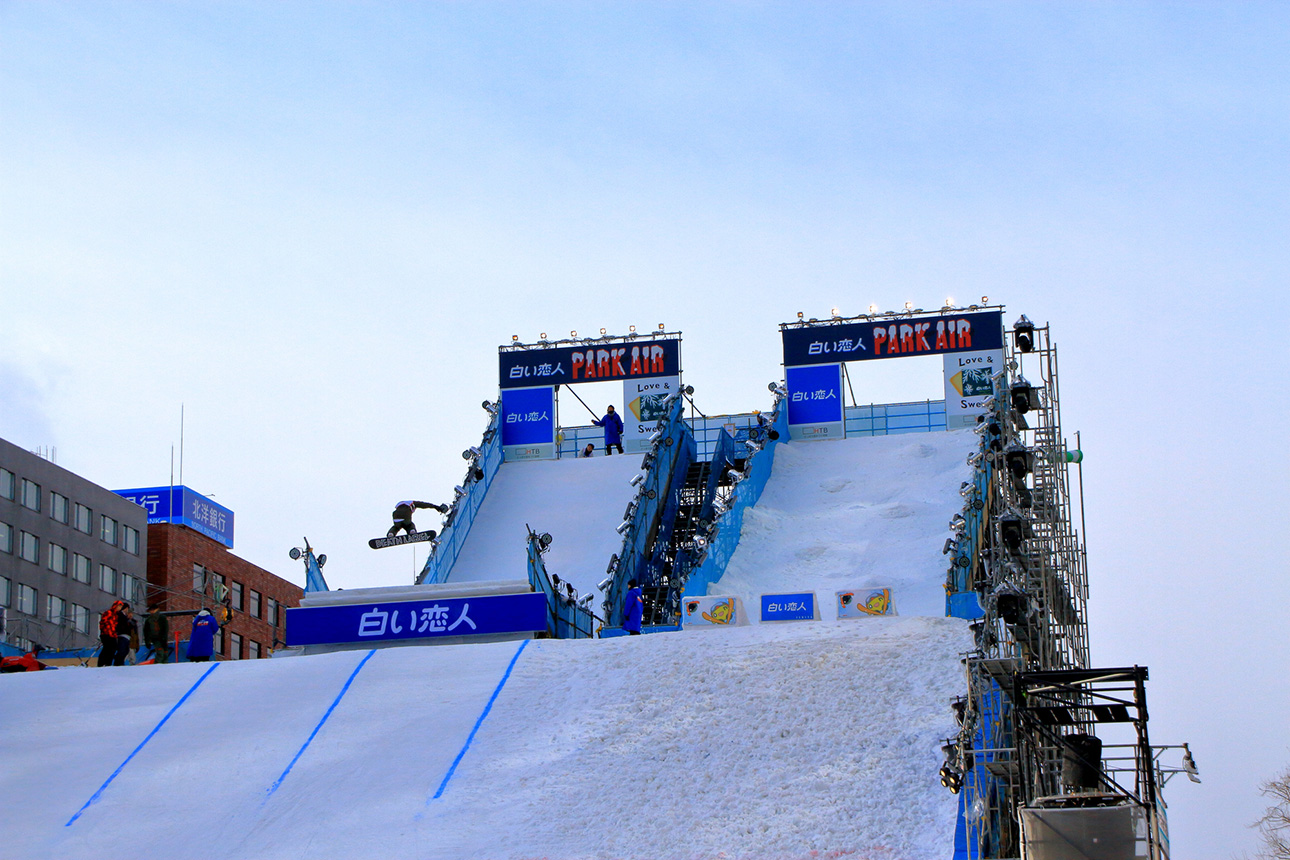
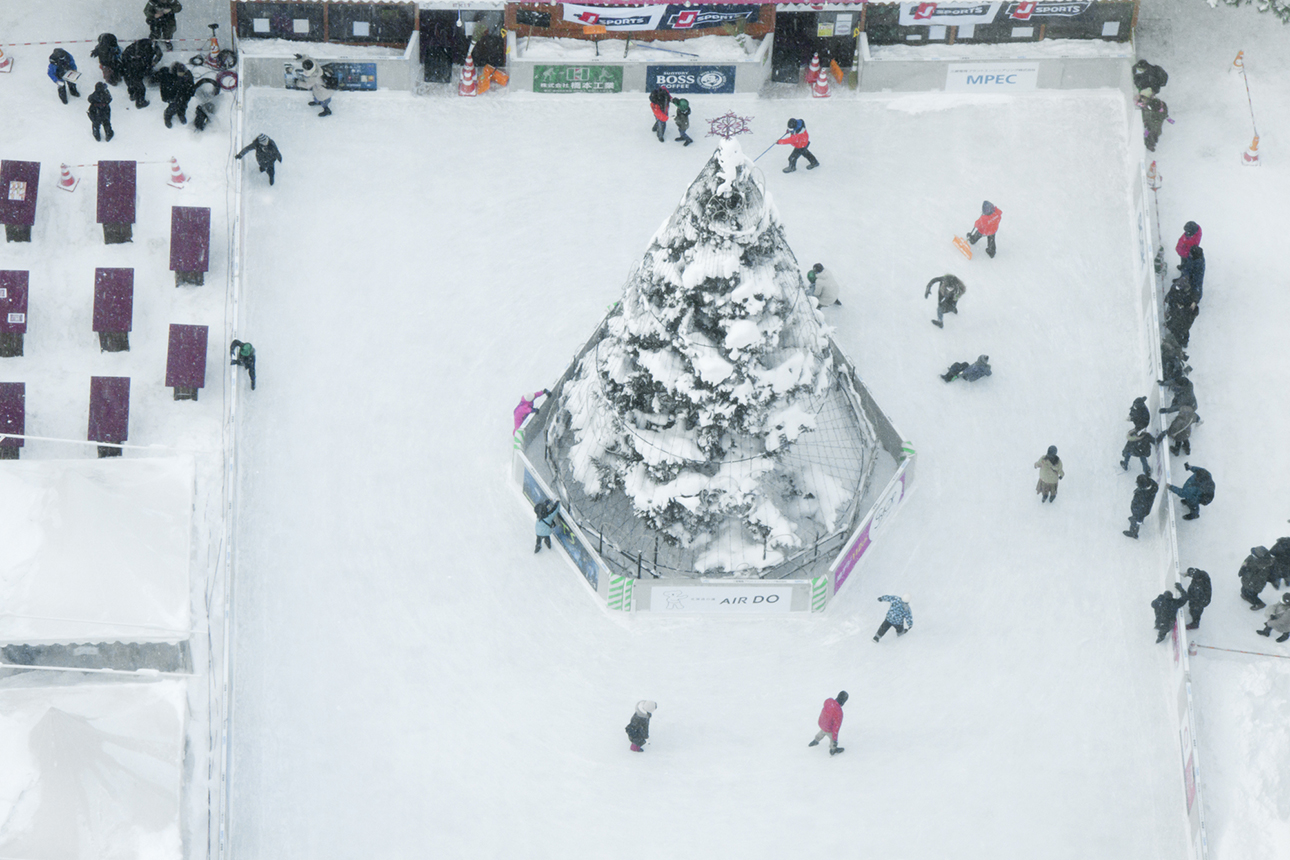
Some of the large snow sculptures also serve as stages, and various live events are held in addition to the opening ceremony. In 2025, these were traditional Ainu dance, a mini live performance by musicians, an event where you can take photos with Turfy and Hello Kitty, a performance by a gospel choir, and a fashion contest by aspiring young people.
Let’s look forward to seeing what ideas will entertain us in 2026.
Gourmet Food & Shopping
Hokkaido is a treasure trove of food, boasting a food self-sufficiency rate of 190%. Enjoy local delicacies unique to Hokkaido. Each venue will have food and drink booths, where you can choose from a wide variety of options, including ramen noodles, soup curry, hot wine, coffee, etc. that will warm you up, as well as mutton and lamb barbecue, seafood, grilled skewered chicken called yakitori, fried chicken, sweets, and more.
There are also the festival’s official shops that sell limited-edition souvenirs, such as T-shirts, cups, pens, etc., and you may find the perfect item to remind you of your tour.
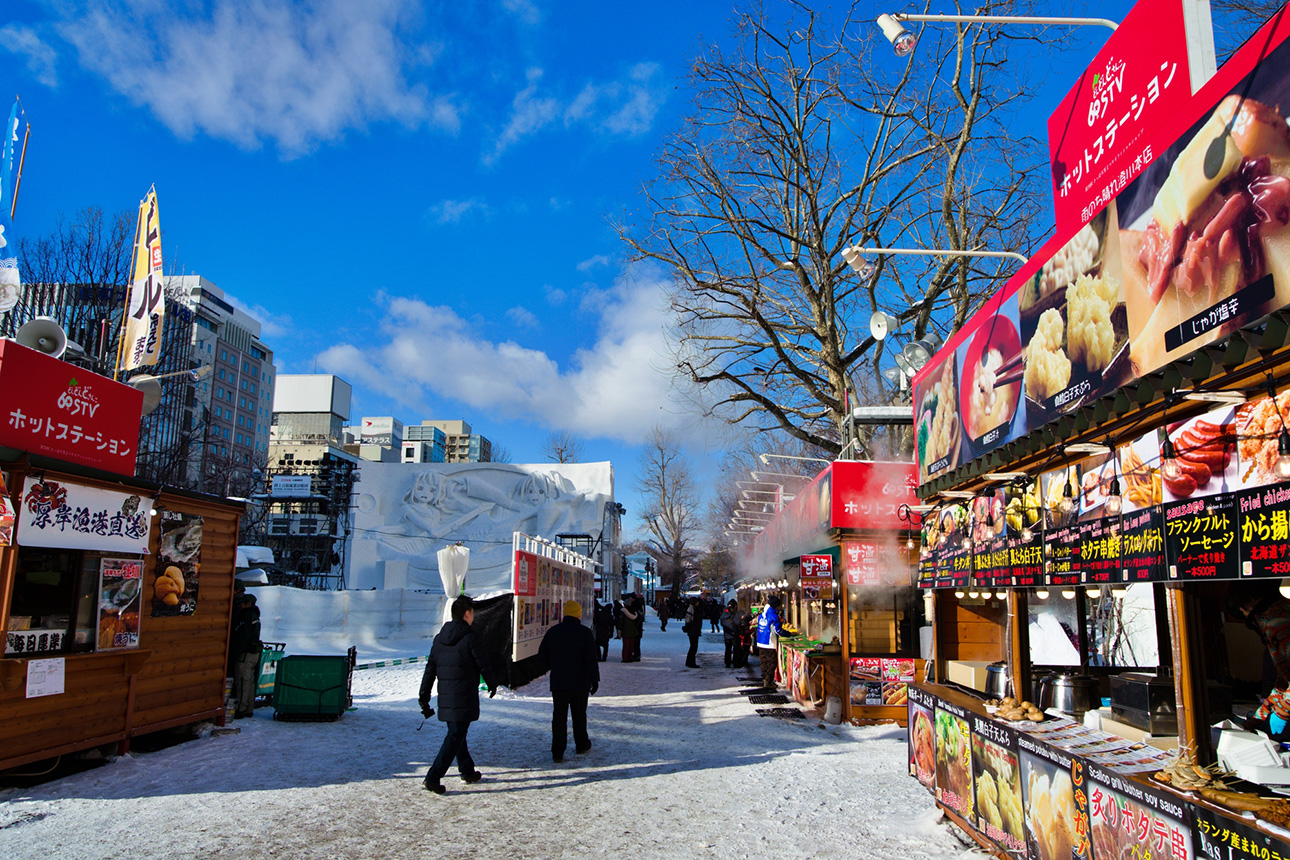
Furthermore, in the Odori and Susukino areas located in the city centre, there is no shortage of places to shop, including department stores, underground shopping malls, and the oldest shopping street in Sapporo called Tanukikoji. Conveniently, a network of underground passages connects the Odori Park area, Susukino, and another shopping district, the Sapporo Station area, which allows you to move around without feeling cold so you can enjoy shopping and wining and dining at your own pace.
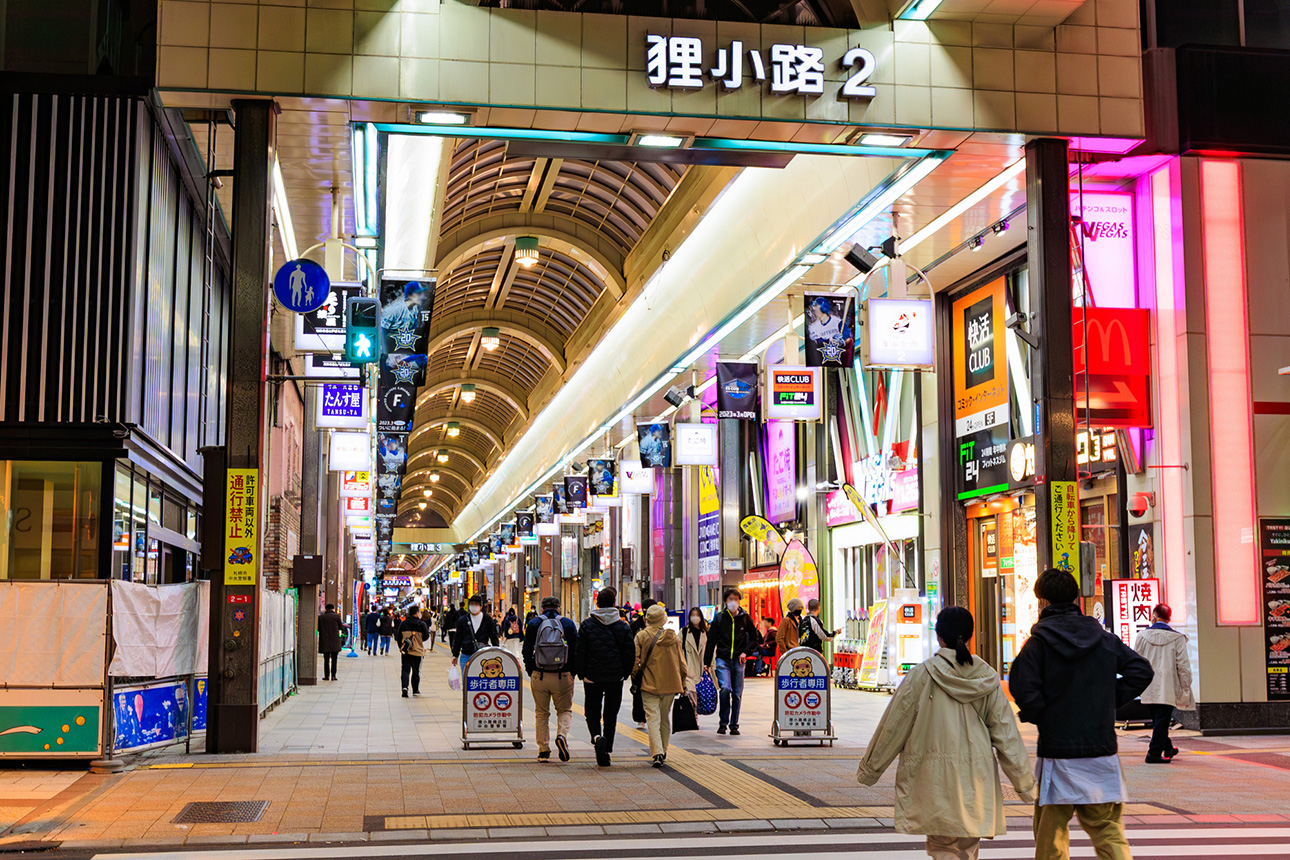
Tourism Ambassador of Sapporo: SNOW MIKU
If you are passionate about music and create songs digitally, you are likely familiar with Hatsune Miku, a virtual singer. This character debuted in 2007 as music software that enables anyone to make the computer sing by entering lyrics and melodies. Now widely recognized across the globe, she is a product of the Hokkaido-based company Crypton Future Media, INC. In 2010, a derivative character known as SNOW MIKU emerged following the creation of a snow sculpture depicting a pure white Hatsune Miku at the Sapporo Snow Festival. Since 2024, SNOW MIKU has been serving as a tourism ambassador of Sapporo. A life-sized figure of SNOW MIKU is displayed at the Sapporo Snow Festival Museum, boosting the visibility of this event. Annually, a snow sculpture featuring SNOW MIKU is created at the Odori Park venue of Sapporo Snow Festival, and in 2025, it was illuminated using COUGEN, an app that synchronizes music with lighting, showcasing innovative technologies that enhance the festival’s experience.
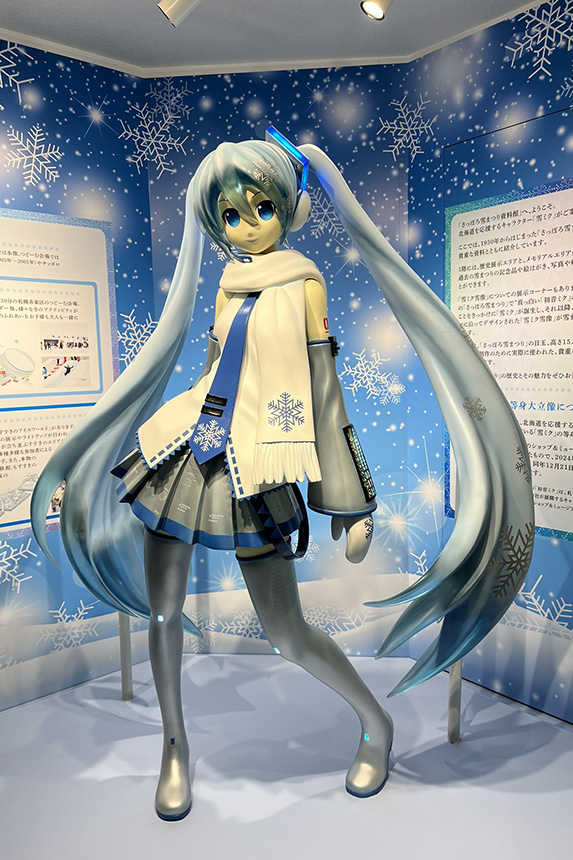
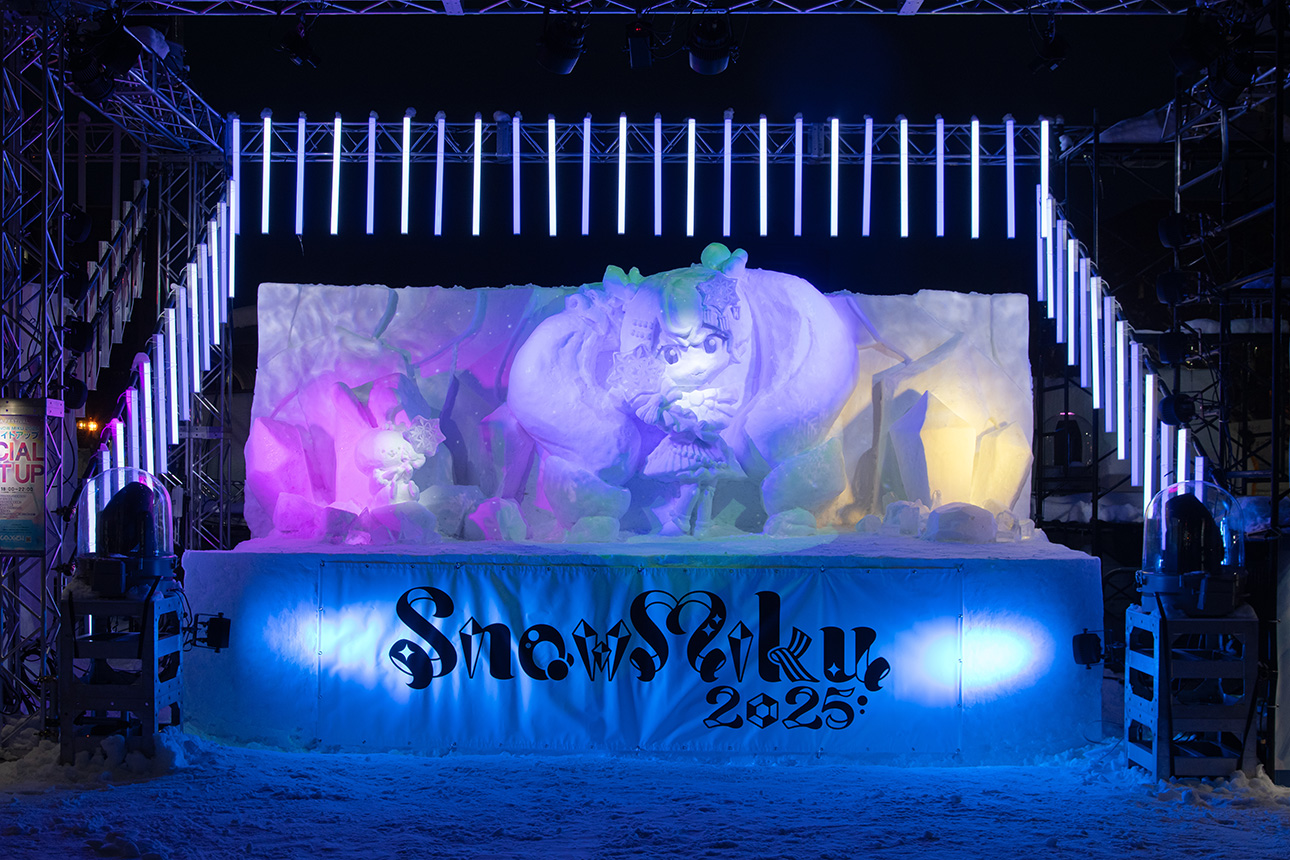
Post-festival event: Snow sculpture dismantling show
The Snow Festival ends on February 11, and the snow sculptures will be dismantled the following day, which tourists are welcome to watch. While it would be nice to leave them in place a while longer for continued enjoyment, safety measures require them to be taken down right away. The sight of the giant snow sculptures being dismantled all at once using an excavator is spectacular but at the same time a little sad. Just like the cherry blossoms famous as a seasonal feature of Japan, snow sculptures are precious because they are fleeting and short-lived, which may be why they attract the interest of so many people.
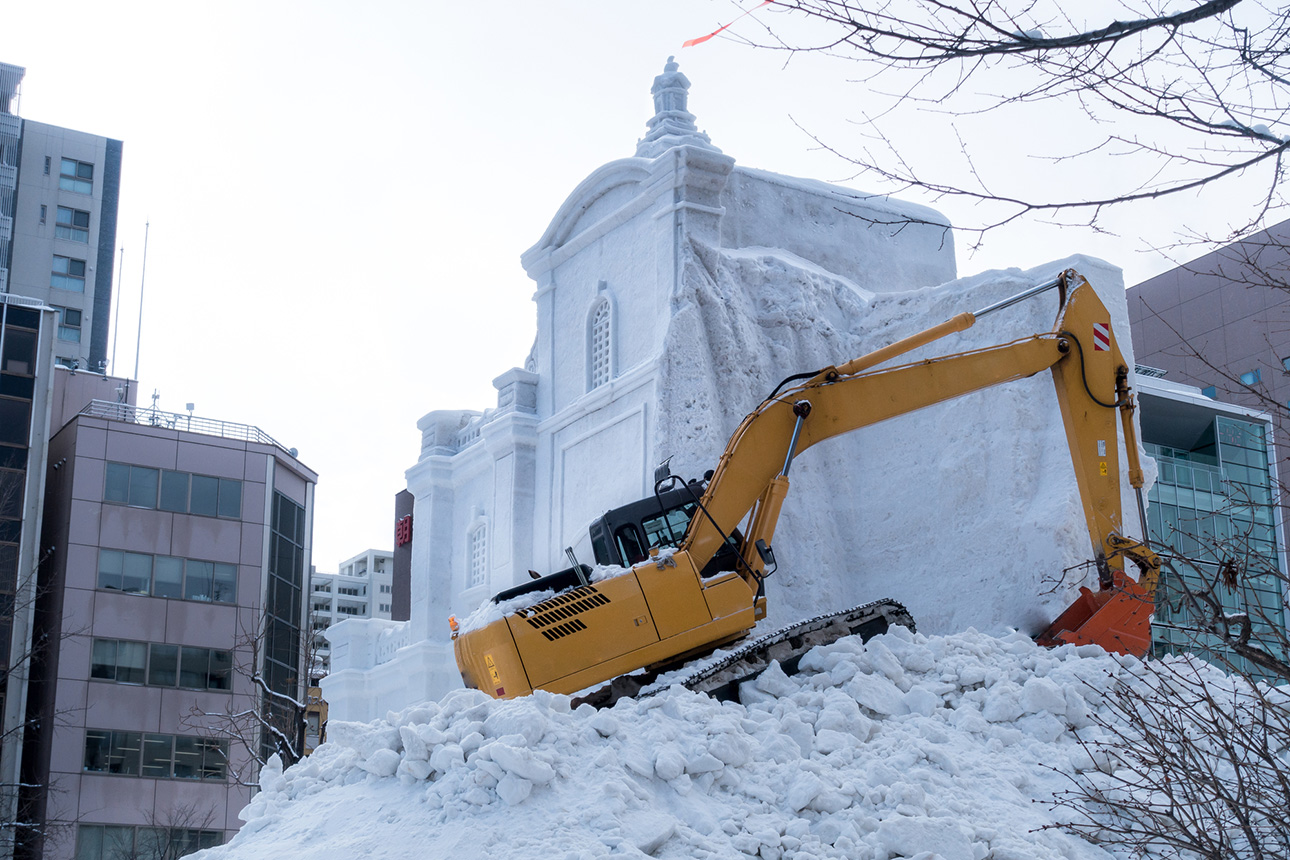
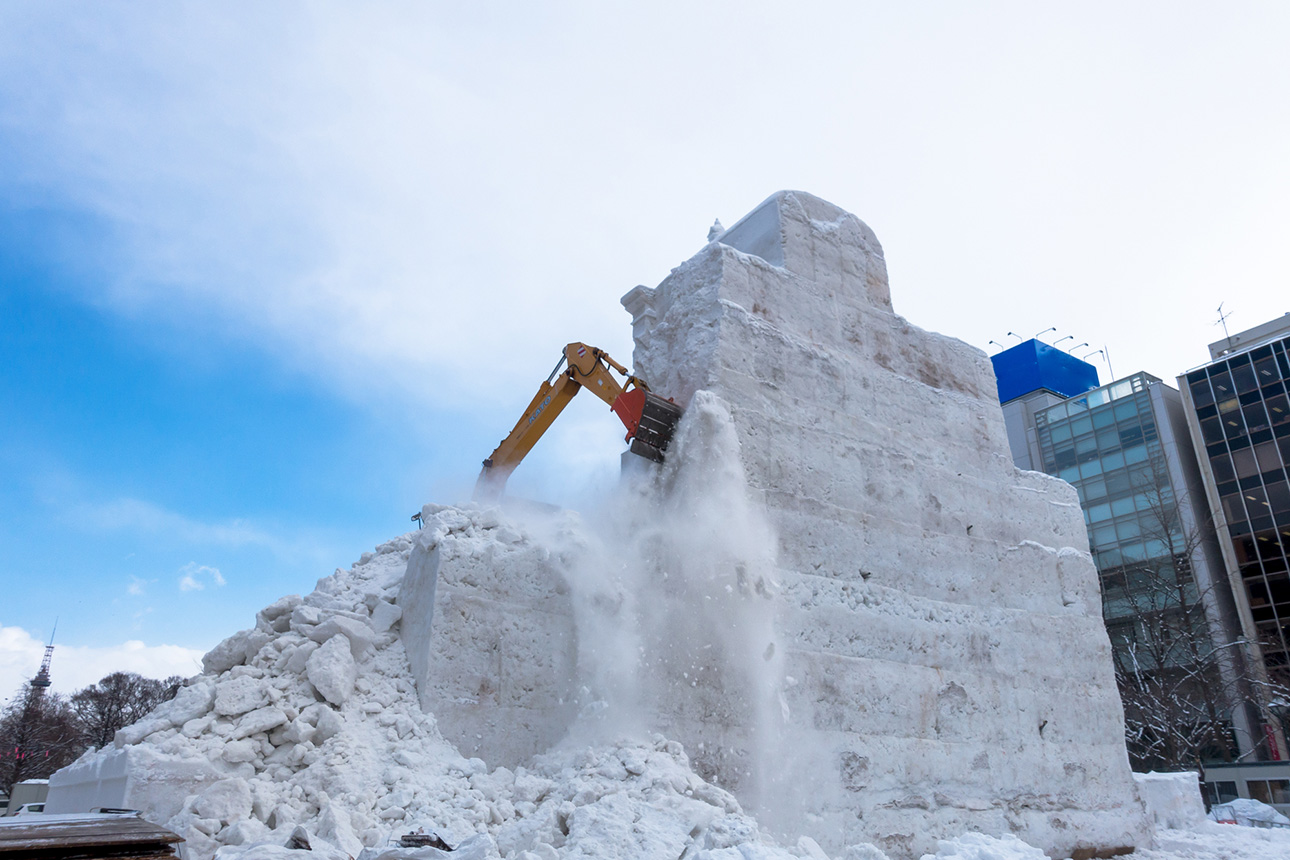
Other spots to enjoy
Why not plan a sightseeing tour to explore the attractions of Sapporo and the surrounding area in conjunction with the Snow Festival? Below are some recommended spots in Sapporo to be included in your tour.
Clock Tower
150 years ago, when Hokkaido officially became a territory of Japan, the Sapporo Clock Tower was part of the Marshal Art Hall of the Sapporo Agricultural College (now Hokkaido University), which was established to train human resources to work on the development of Hokkaido. The clock, which has been keeping time since then, is still in good condition, and the building itself is a kind of museum that conveys the history of Sapporo. It is the most popular photo spot in Sapporo.
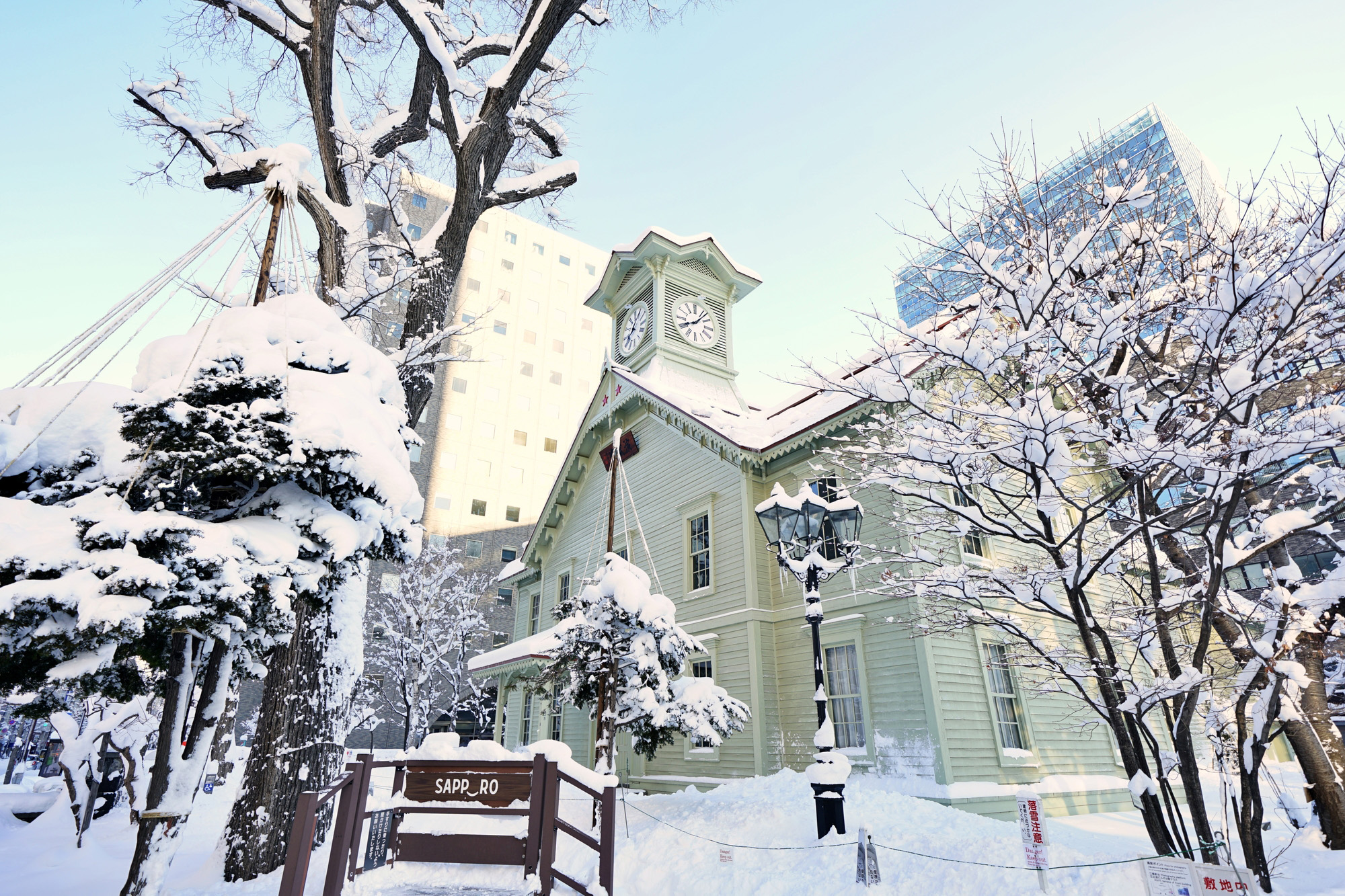
Red Brick: Former Hokkaido Prefectural Government Office
Commonly known as Aka-renga (Red Brick), this former government building was built in 1888 in the American neo-baroque style. Although the interior was burned down in a fire in the early 20th century, the red brick exterior is almost the same as it was back then. Inside the nostalgic building, you can learn about the history of Hokkaido’s development.
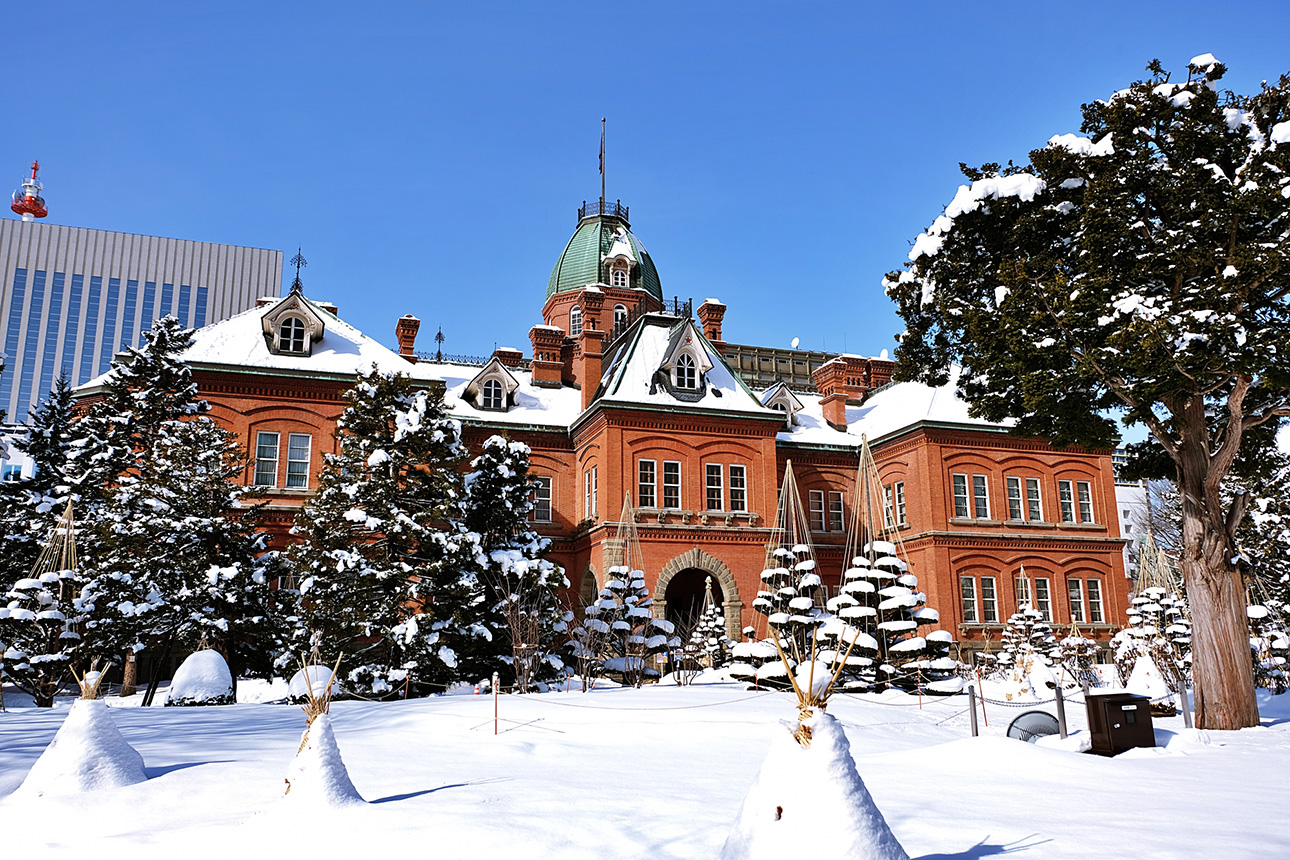
Okurayama Ski Jump Stadium
It is known as the venue for the 90-metre ski jumping competition at the Sapporo Winter Olympics in 1972. You can enjoy a panoramic view of the city and the magnificent Ishikari Plain by taking a chairlift to the observation lounge. You can also feel how scary it is to jump as a ski jumper and understand how amazing the skills and courage of ski jumpers are. The Sapporo Olympic Museum, where there are simulators to experience various winter sports and exhibits to learn more about the history of the Winter Olympics, is also located on the same premises.
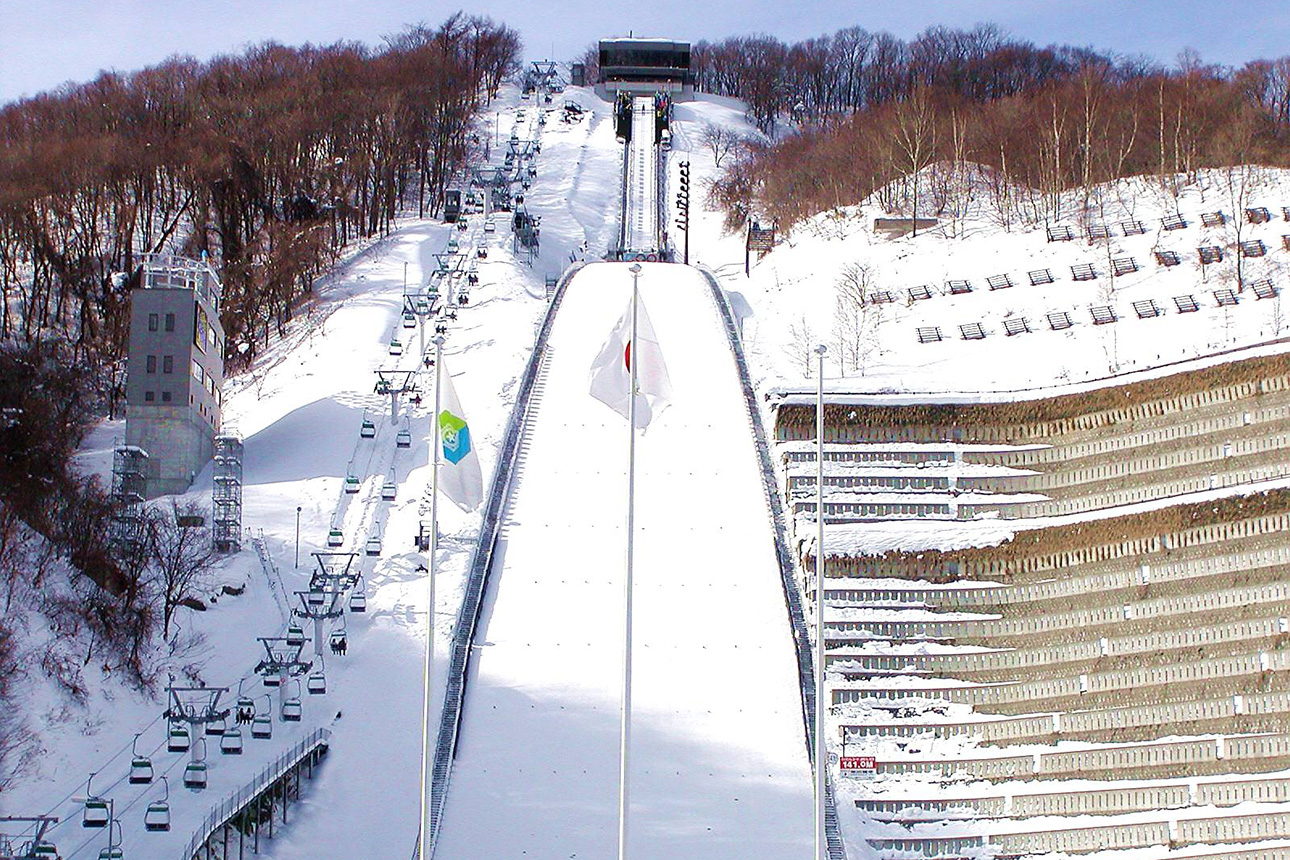
Hoheikyo Hot Spring
After cooling down at the outdoor snow festival, why not relax in the hot springs of Hoheikyo, which is about a 40-minute drive away? This hot spring with free-flowing water from the source is recommended for its large open-air bath, one of the largest in Hokkaido. During the winter, the surrounding area is transformed into beautiful snowy scenery, and you can enjoy the beauty while soaking in the hot spring. The hot water and the fantastic winter scenery will make your travel memories even more special.
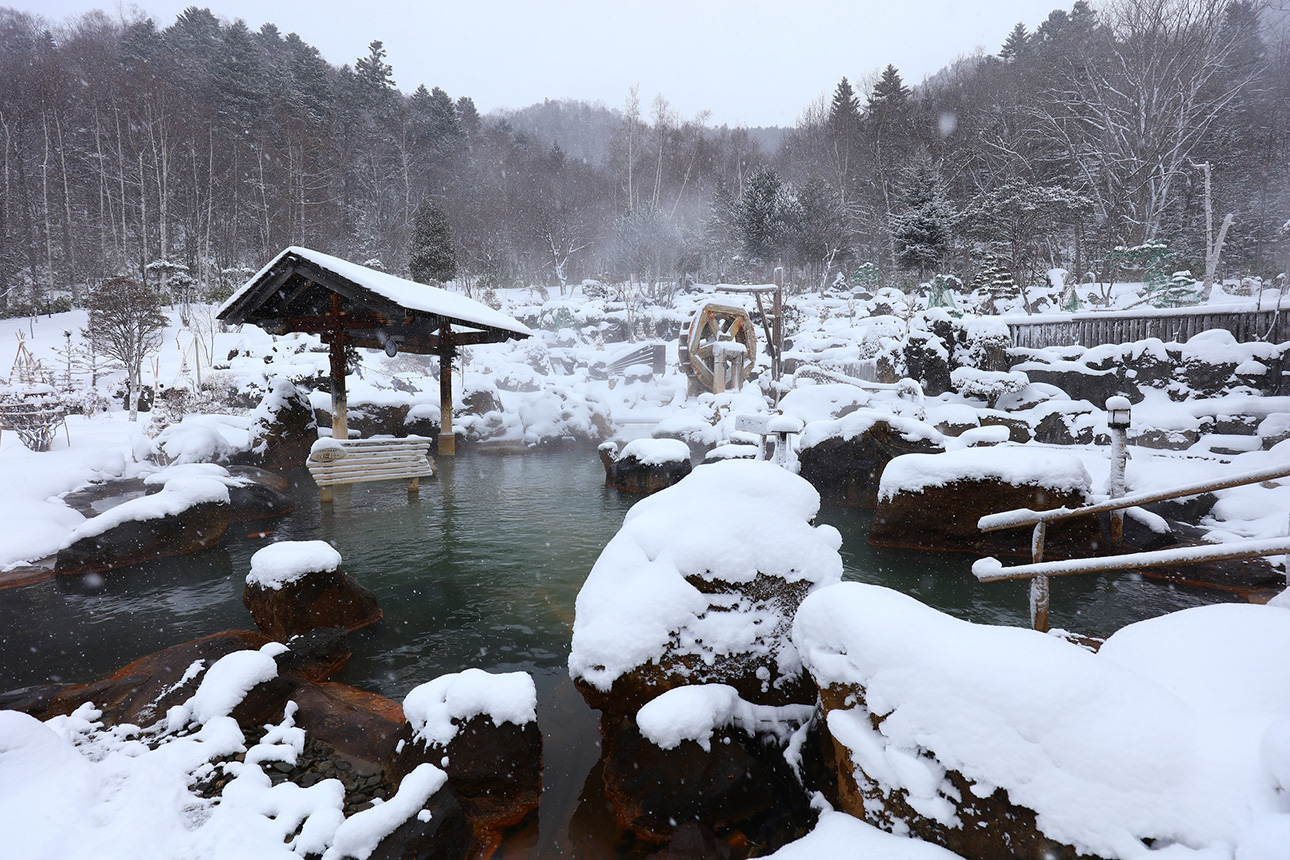
Now is the time to plan your trip!
What did you think? You probably feel like you’ve already experienced the Sapporo Snow Festival.
The Sapporo Snow Festival is a winter festival that combines art, entertainment, and gourmet food. A luxurious time awaits you, surrounded by a fantastic world of impressive giant snow sculptures and illuminated lights. There are also plenty of gourmet foods and a variety of events that will warm the hearts of visitors. It’s also perfect for your first winter trip to Hokkaido.
Next winter, why not experience the charm of the Sapporo Snow Festival? Because it is a very popular event, now is the time to plan your trip! Our tours can be freely customised according to the needs of each customer, according to their schedule and interests. A dedicated staff member will provide you with full support. In addition to the Sapporo Snow Festival, you can also arrange your trip to your liking, such as including a gourmet tour of Sapporo or a relaxing experience at a hot spring resort.
Please leave it to Hokkaido Treasure Island Travel Inc., a travel expert. A winter trip filled with wonderful memories awaits you!
